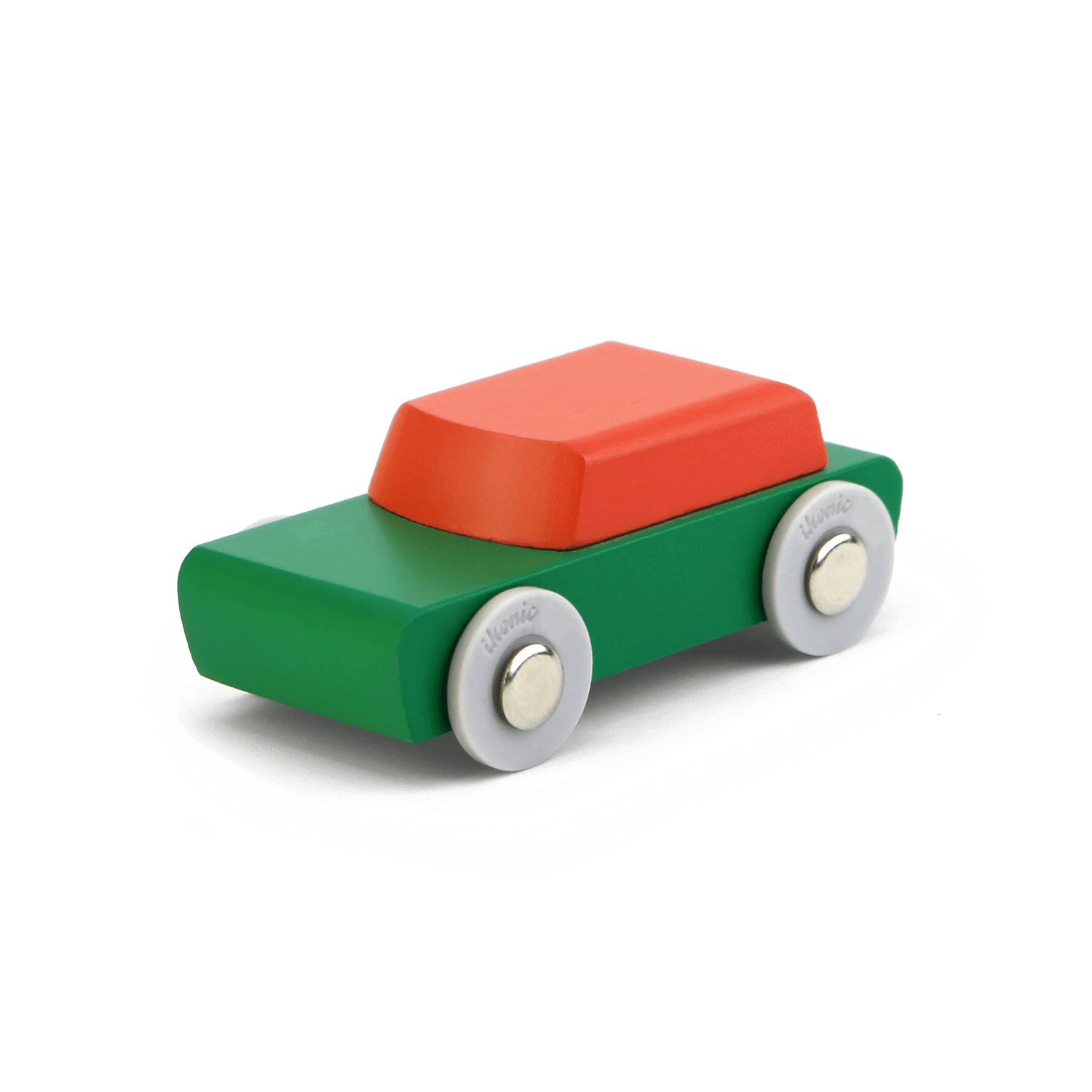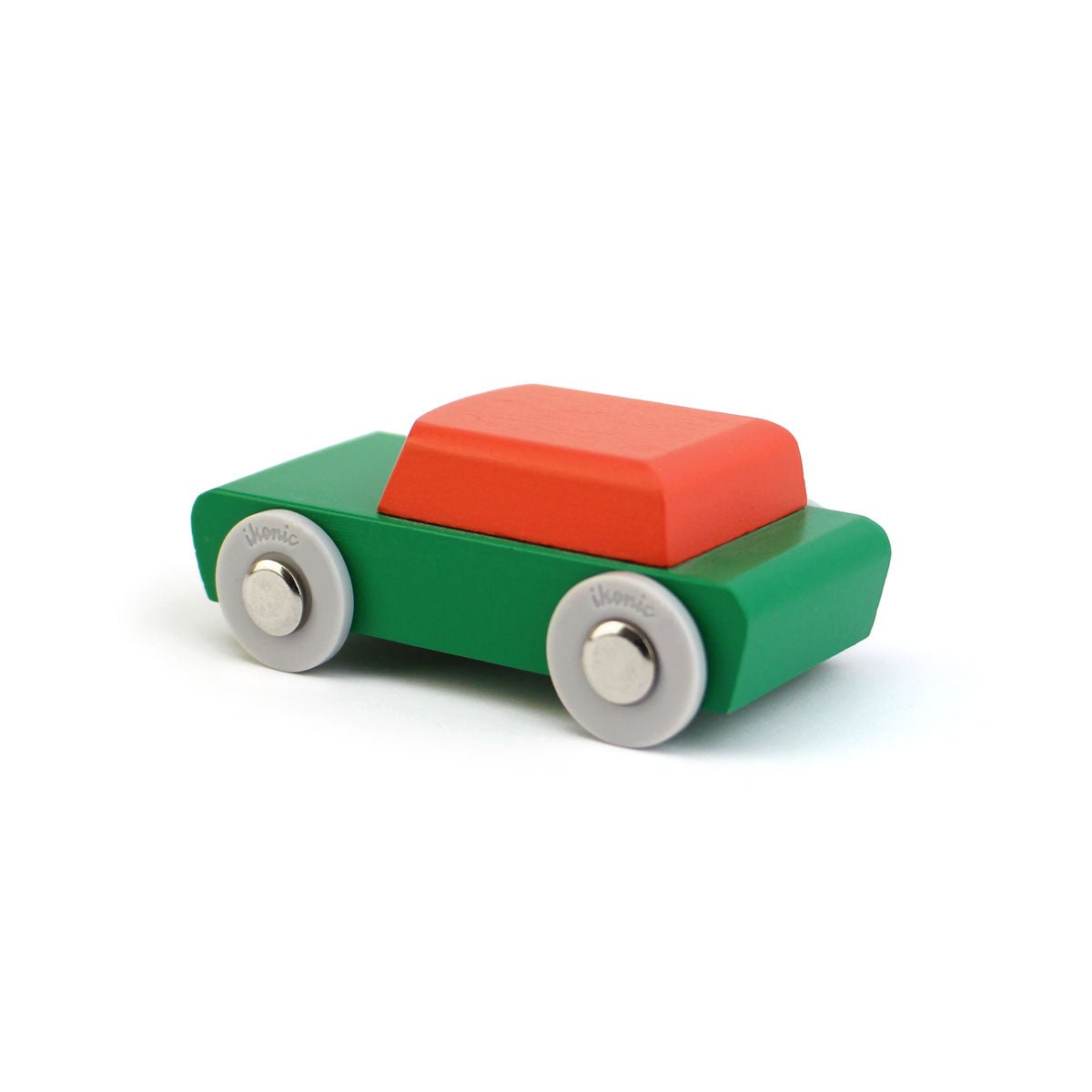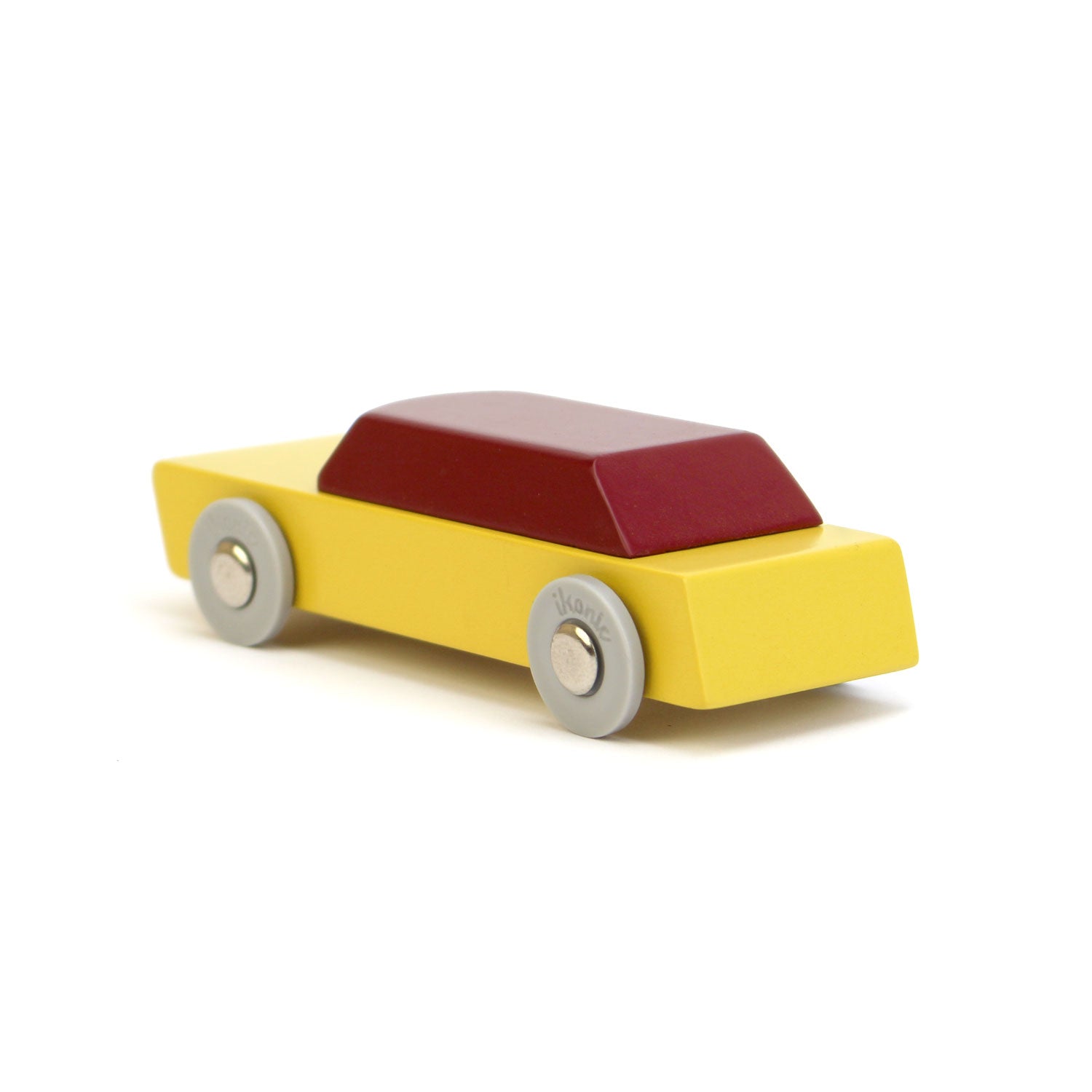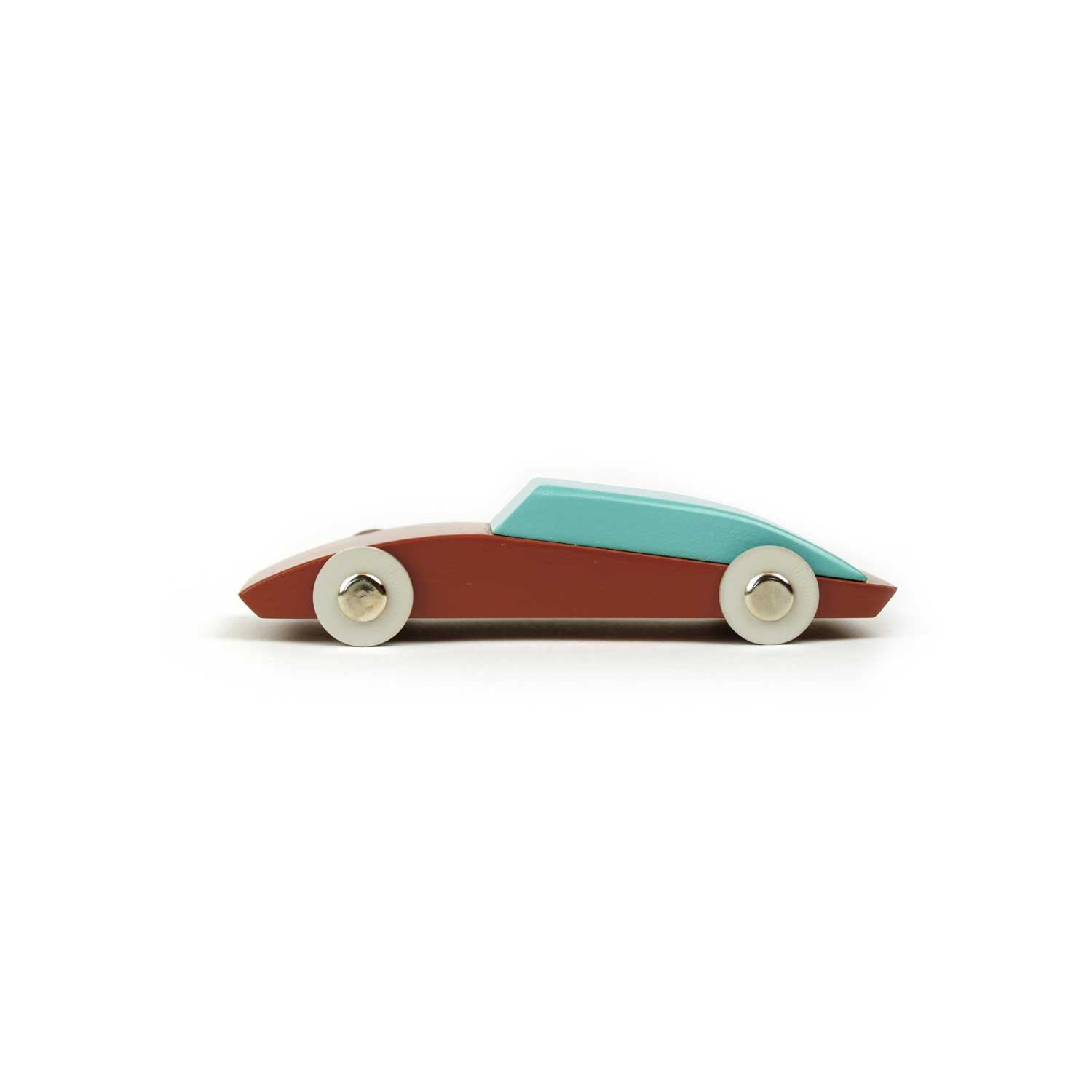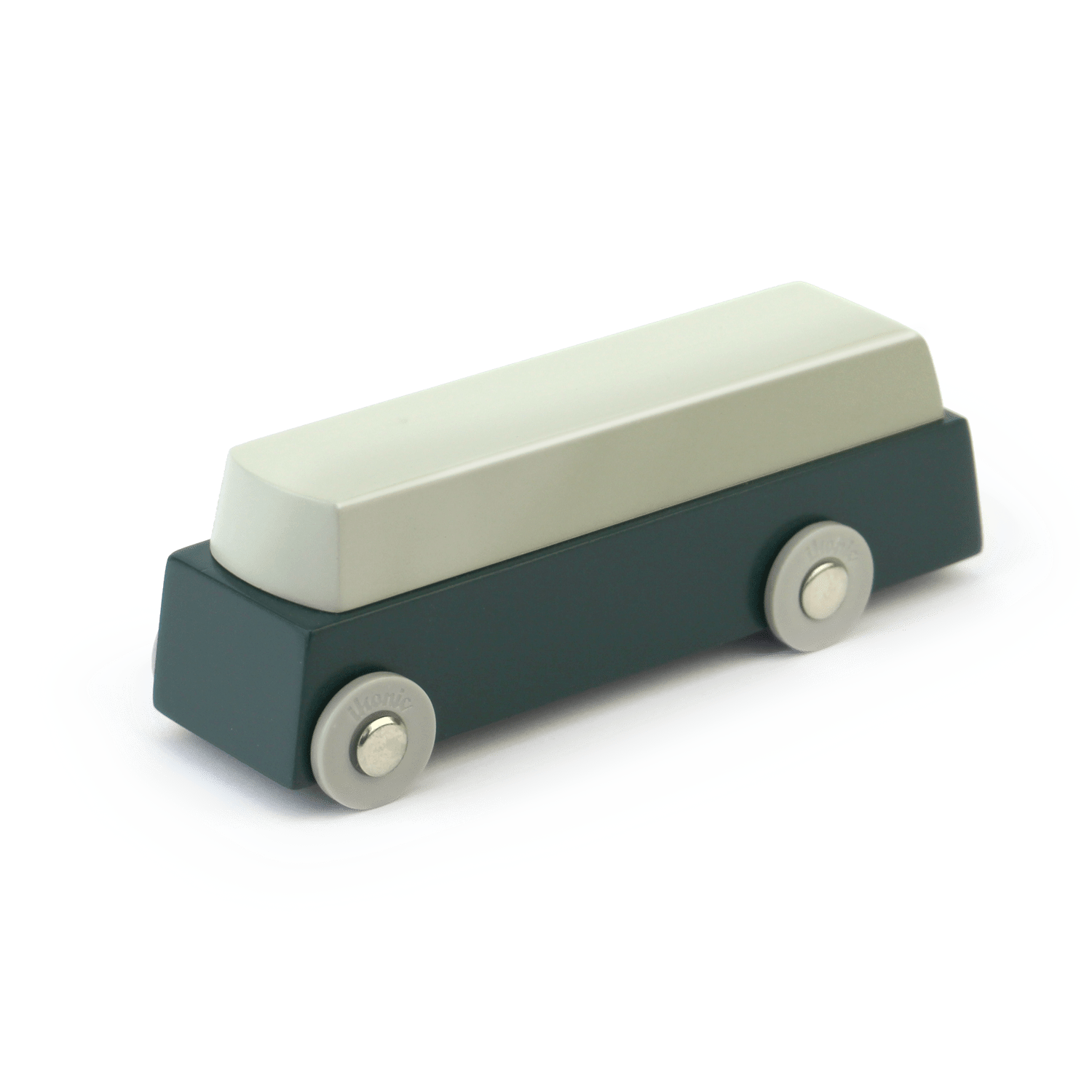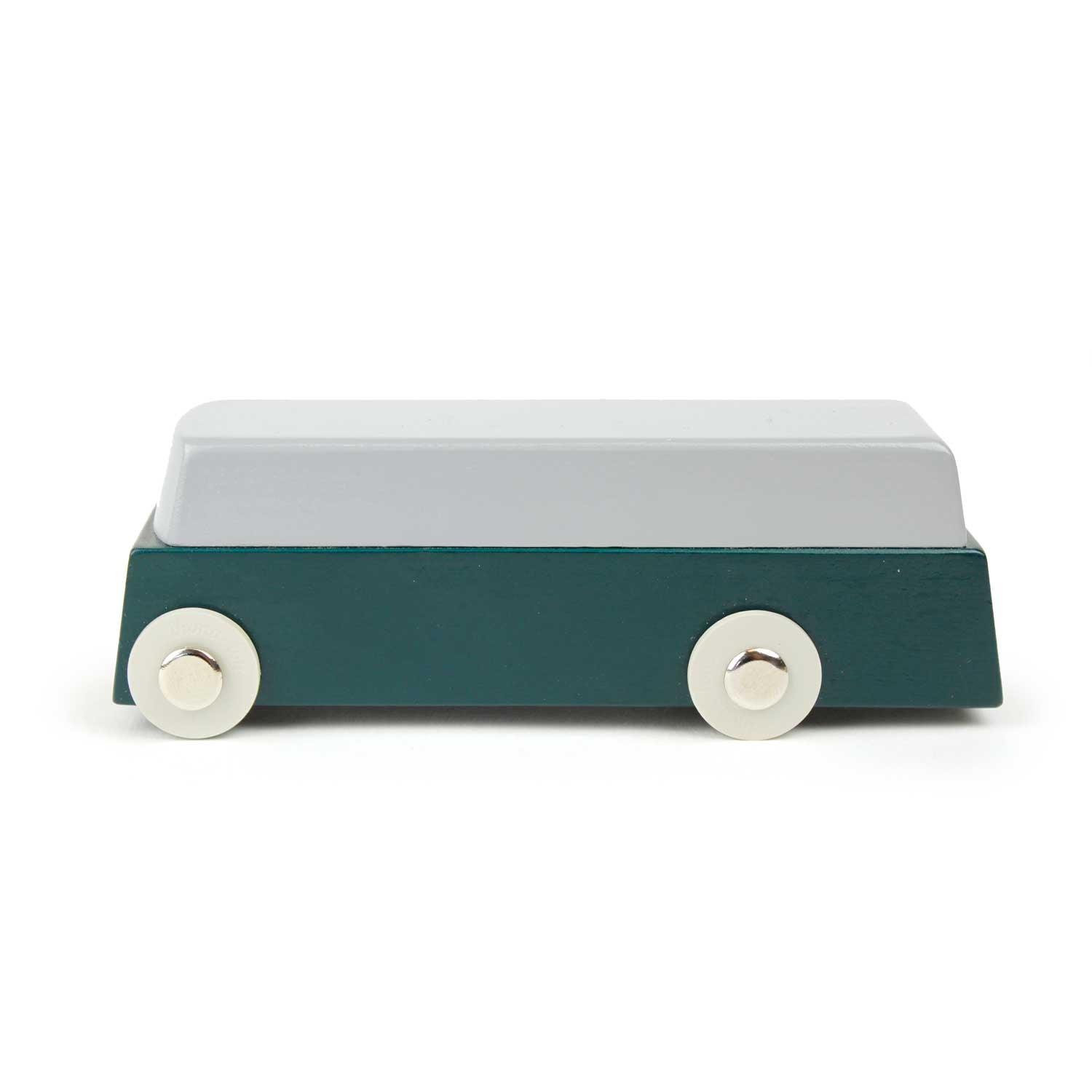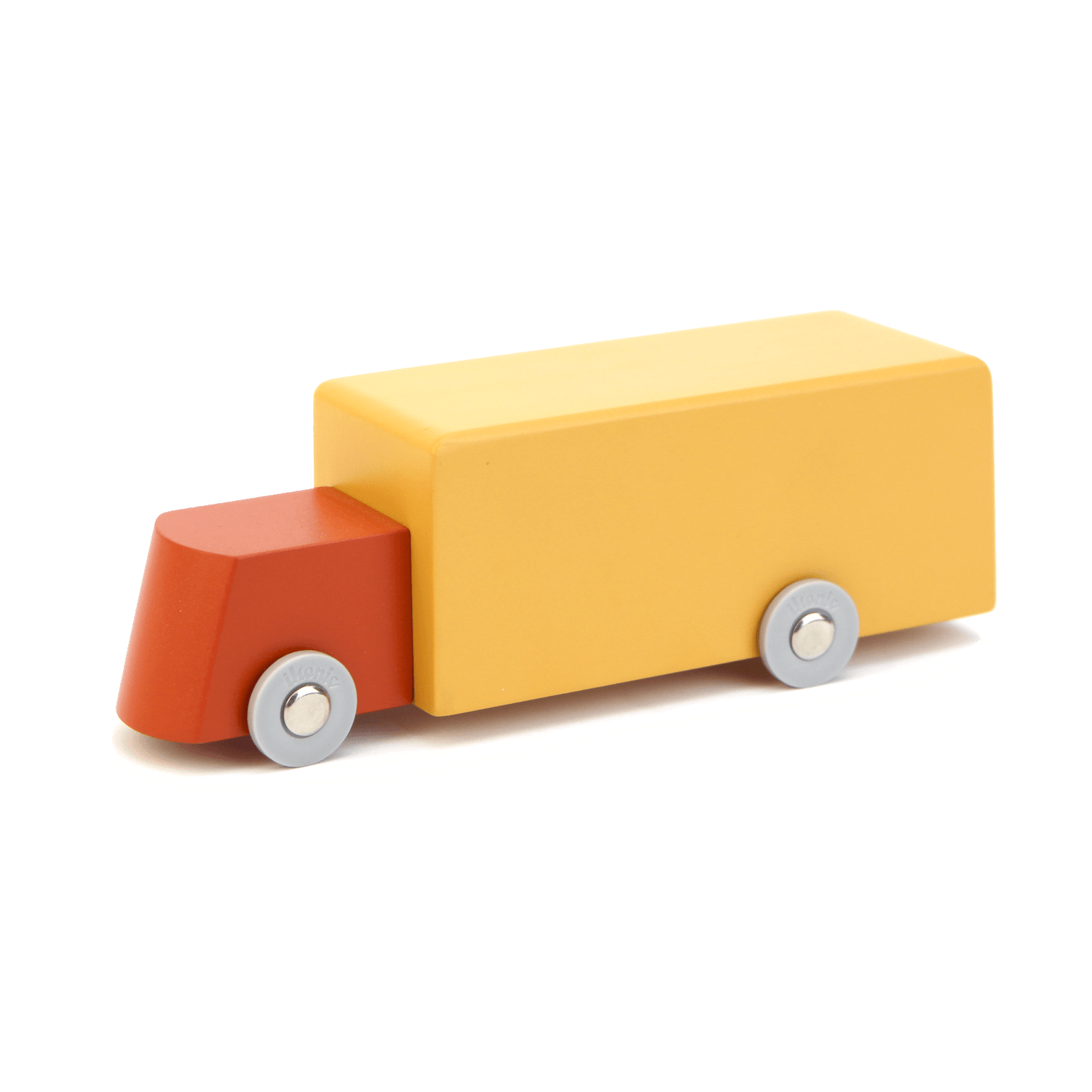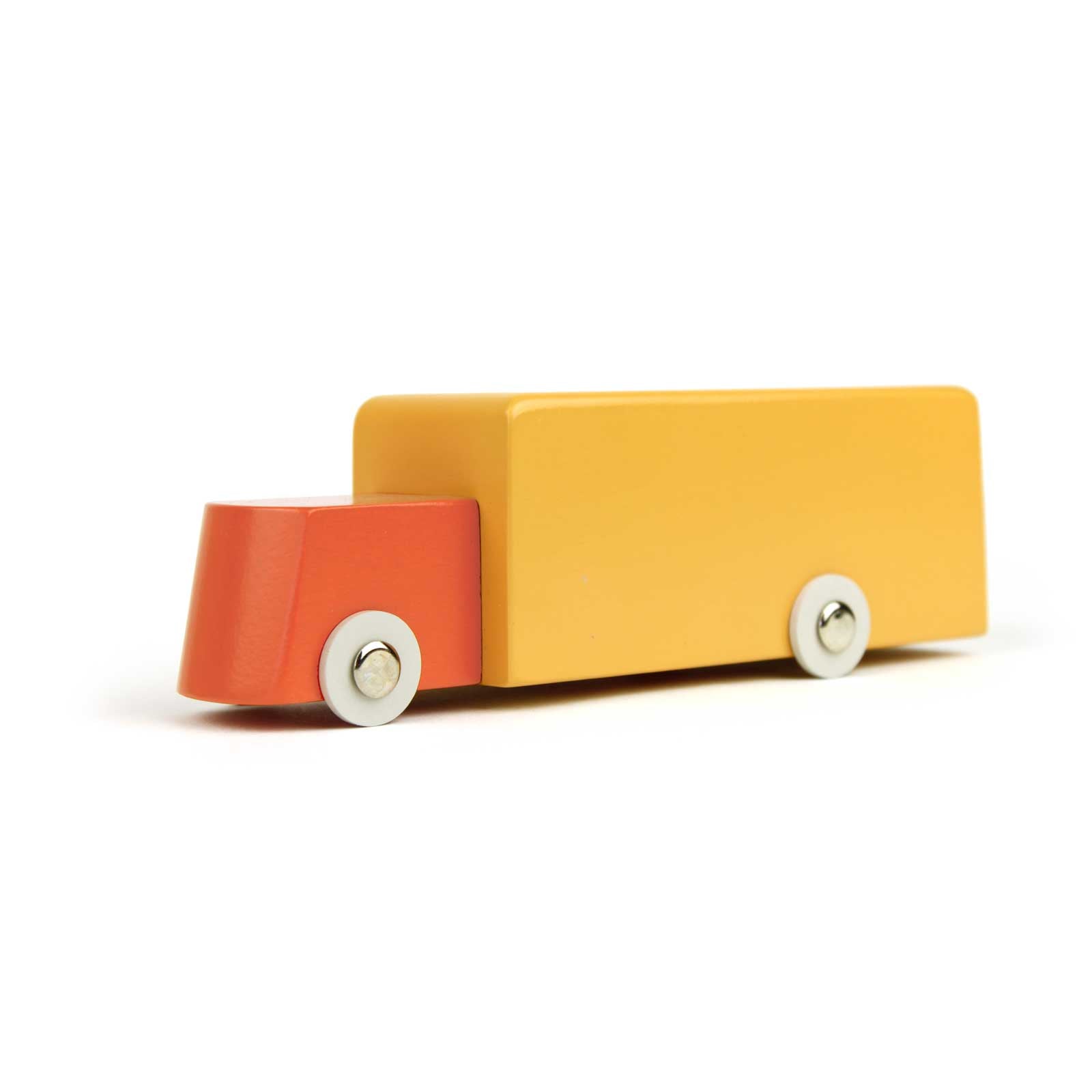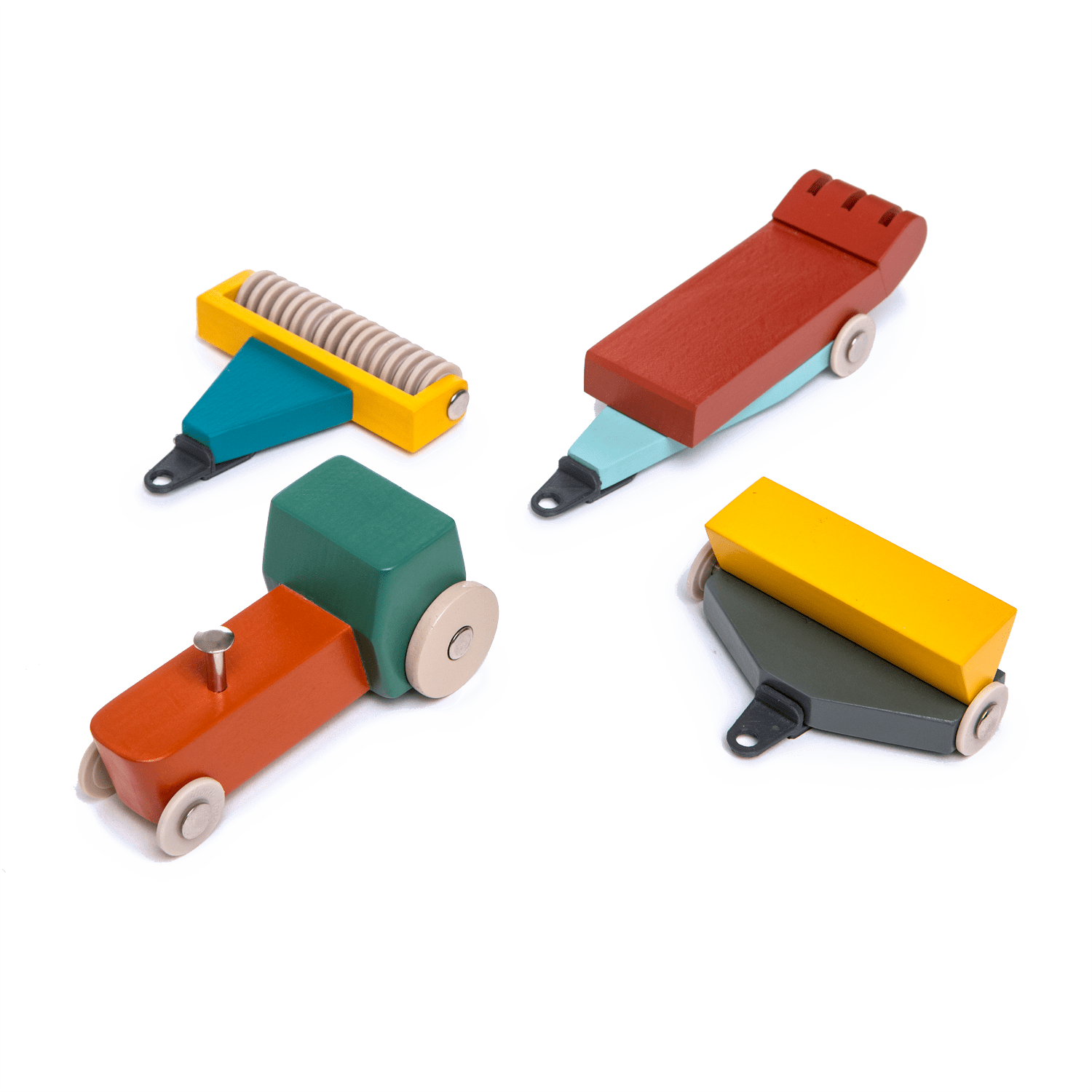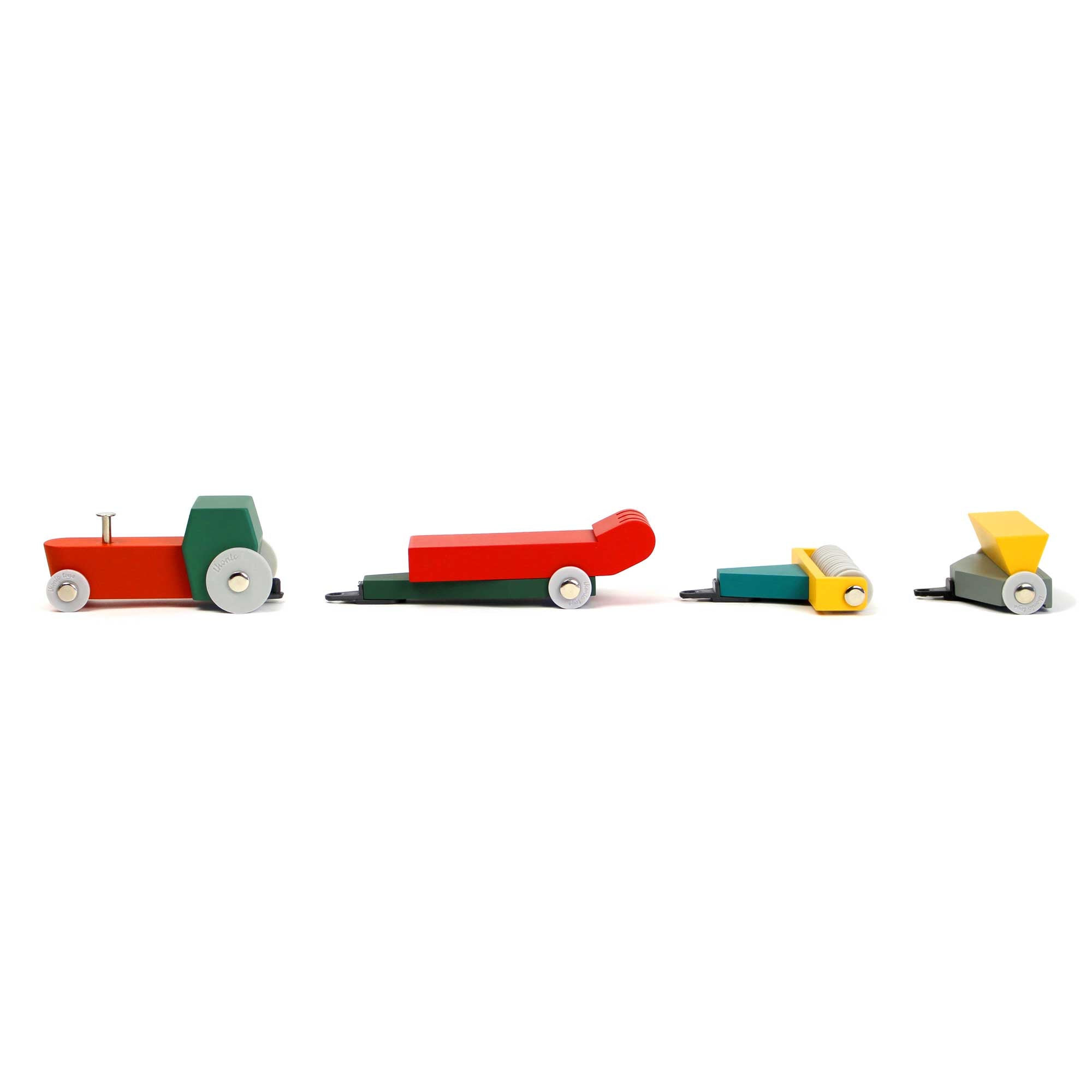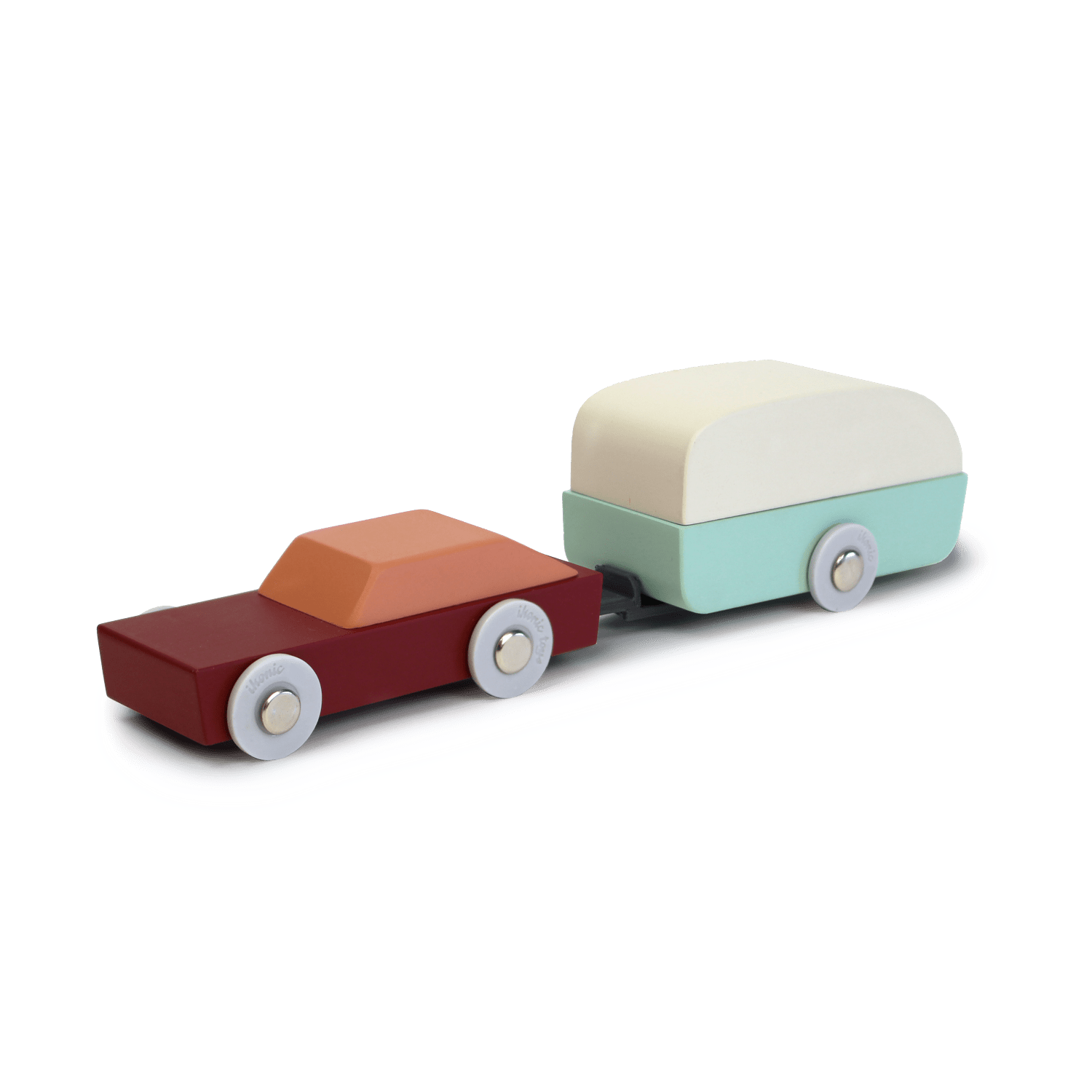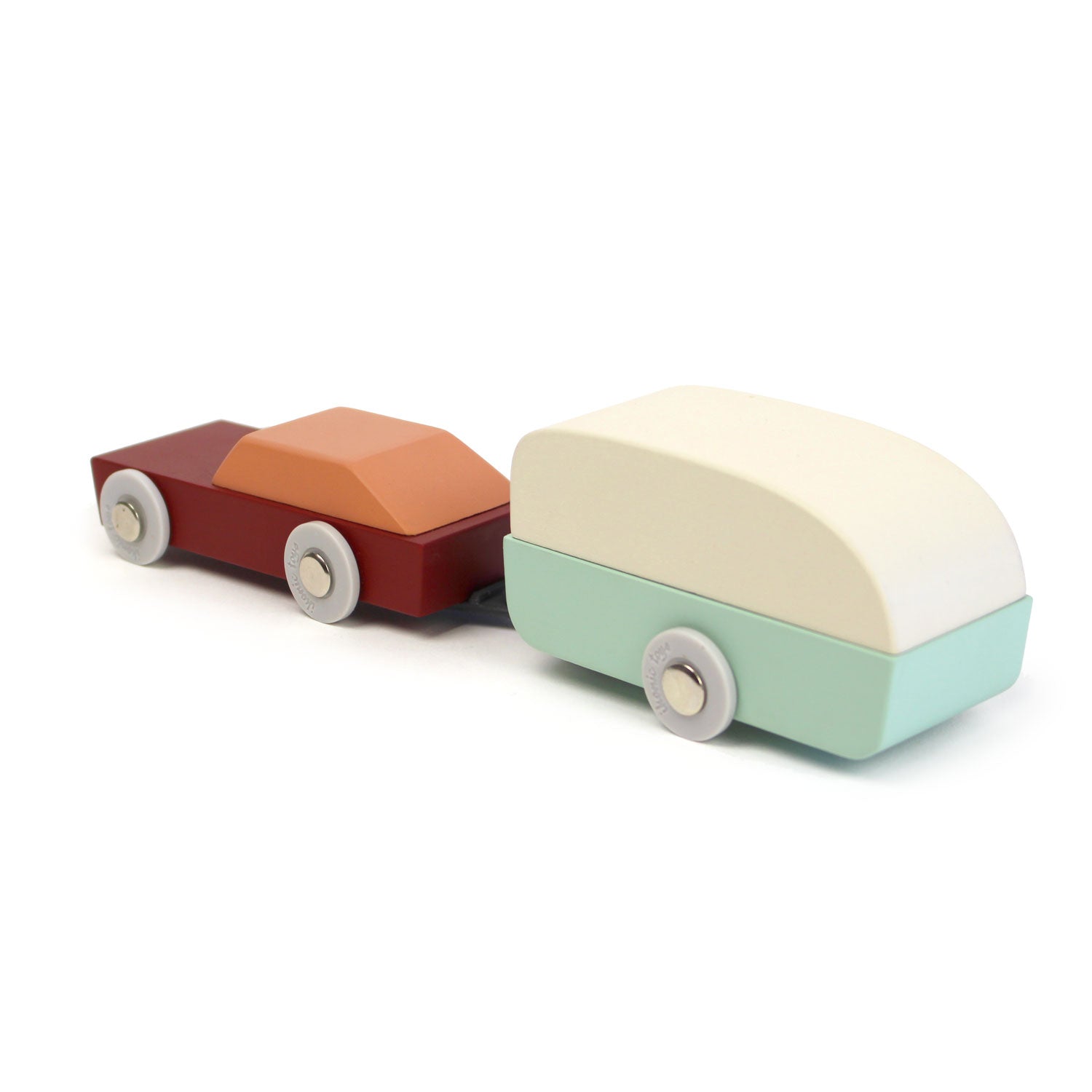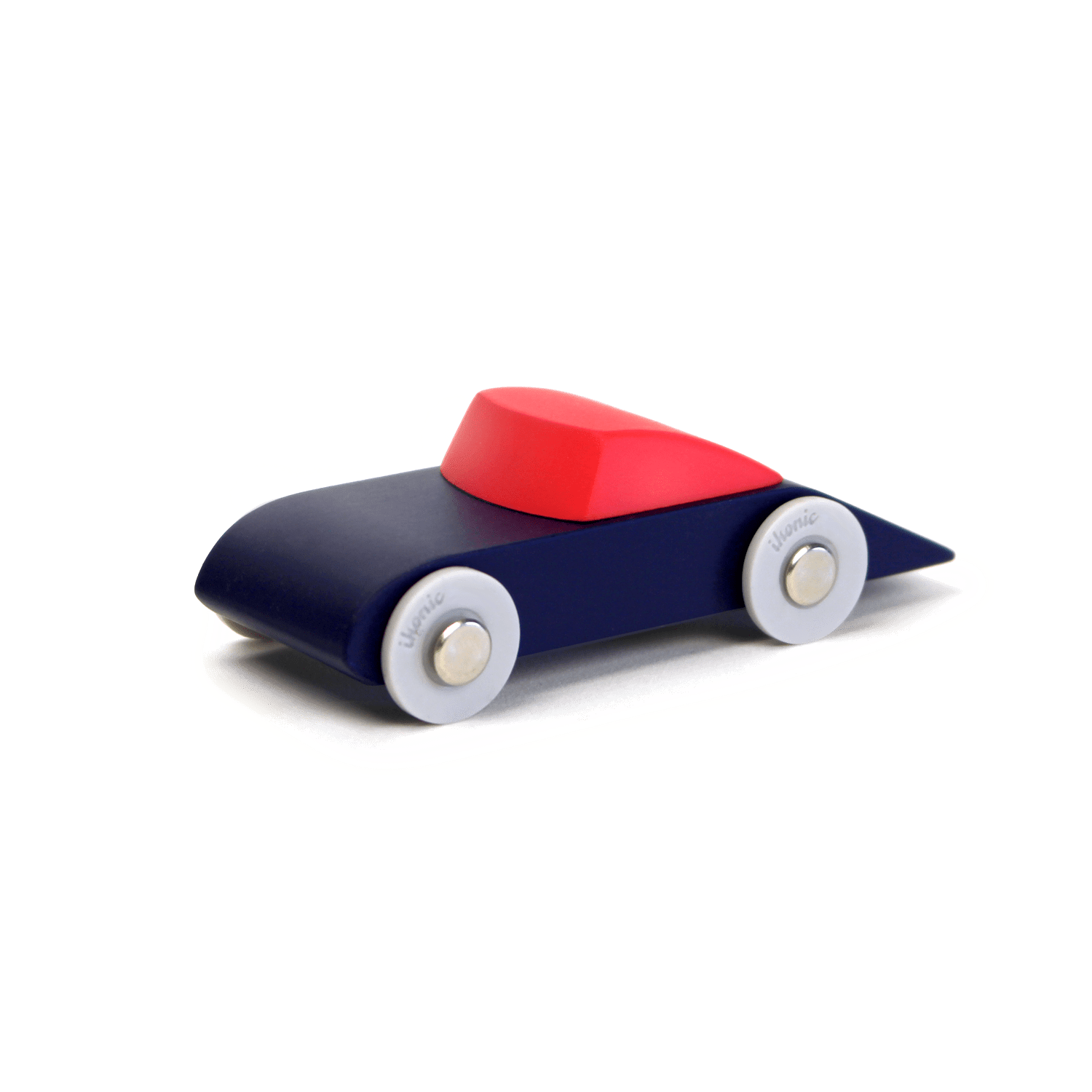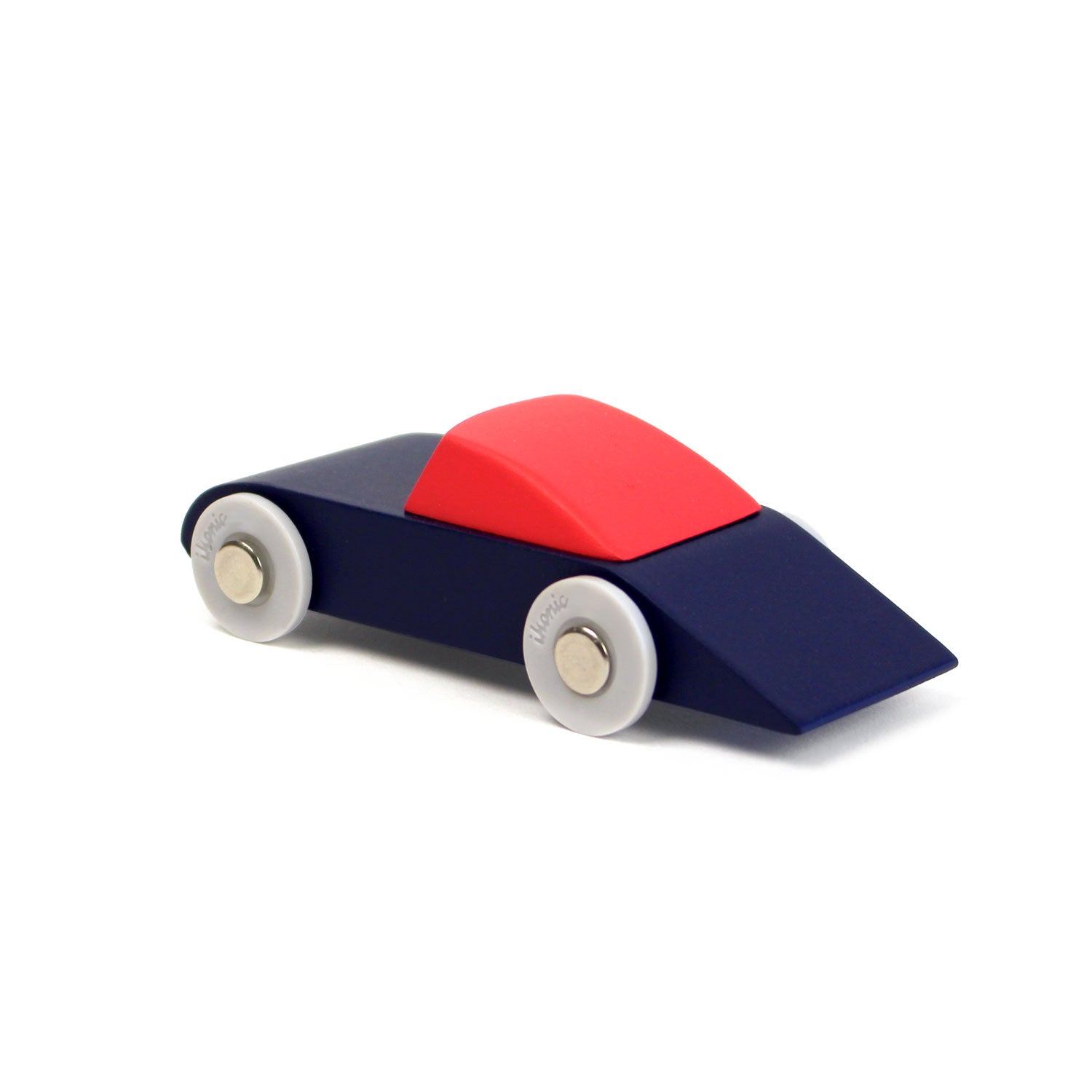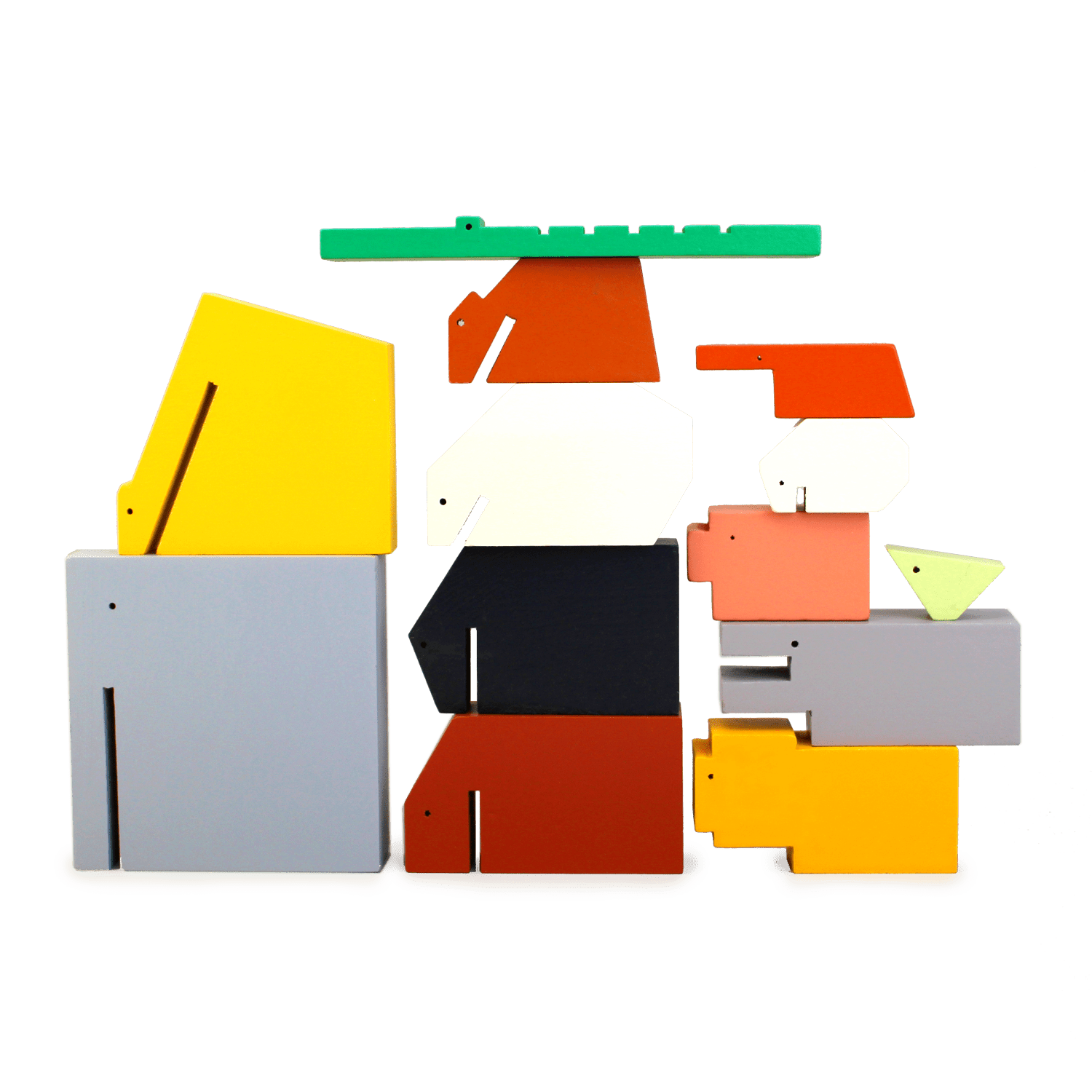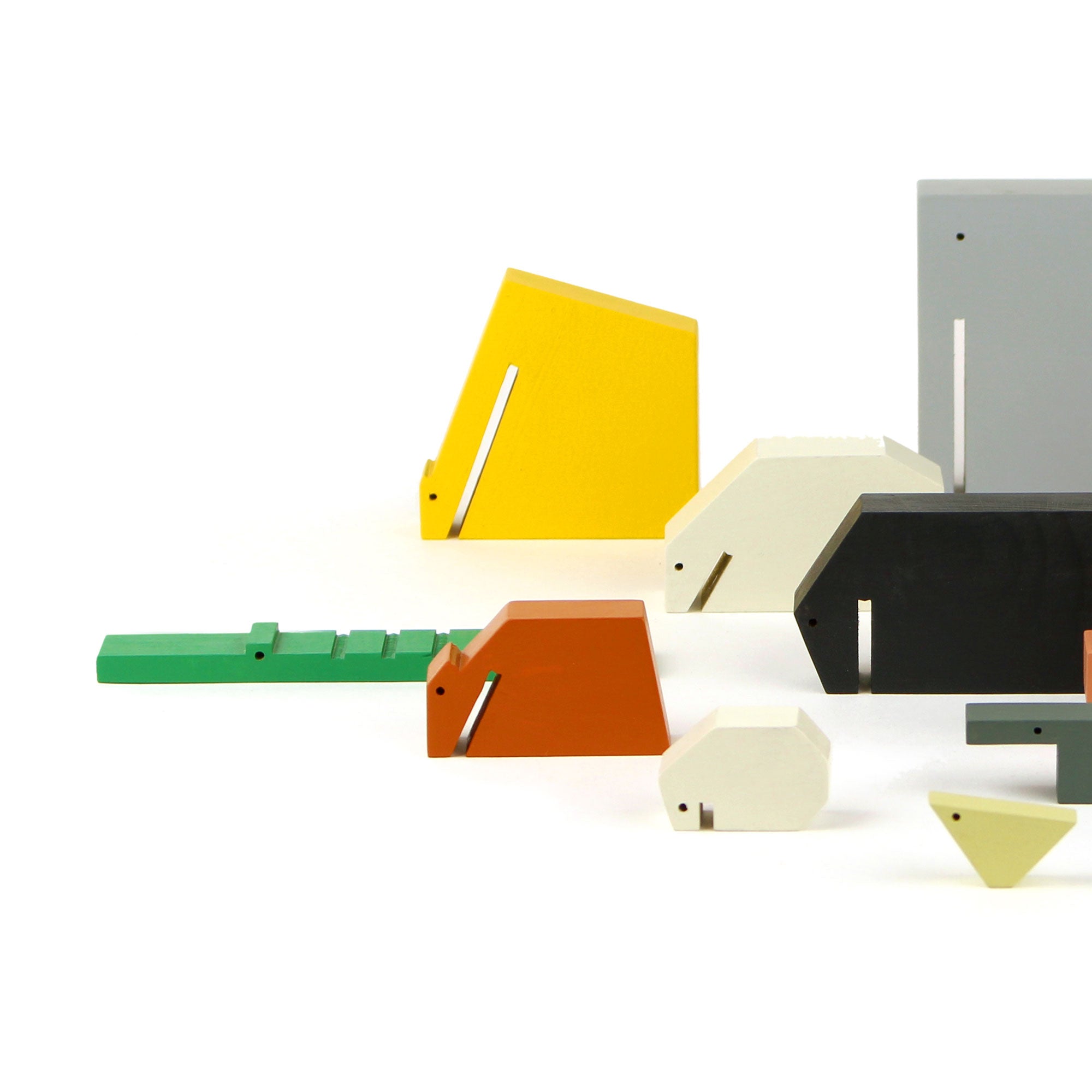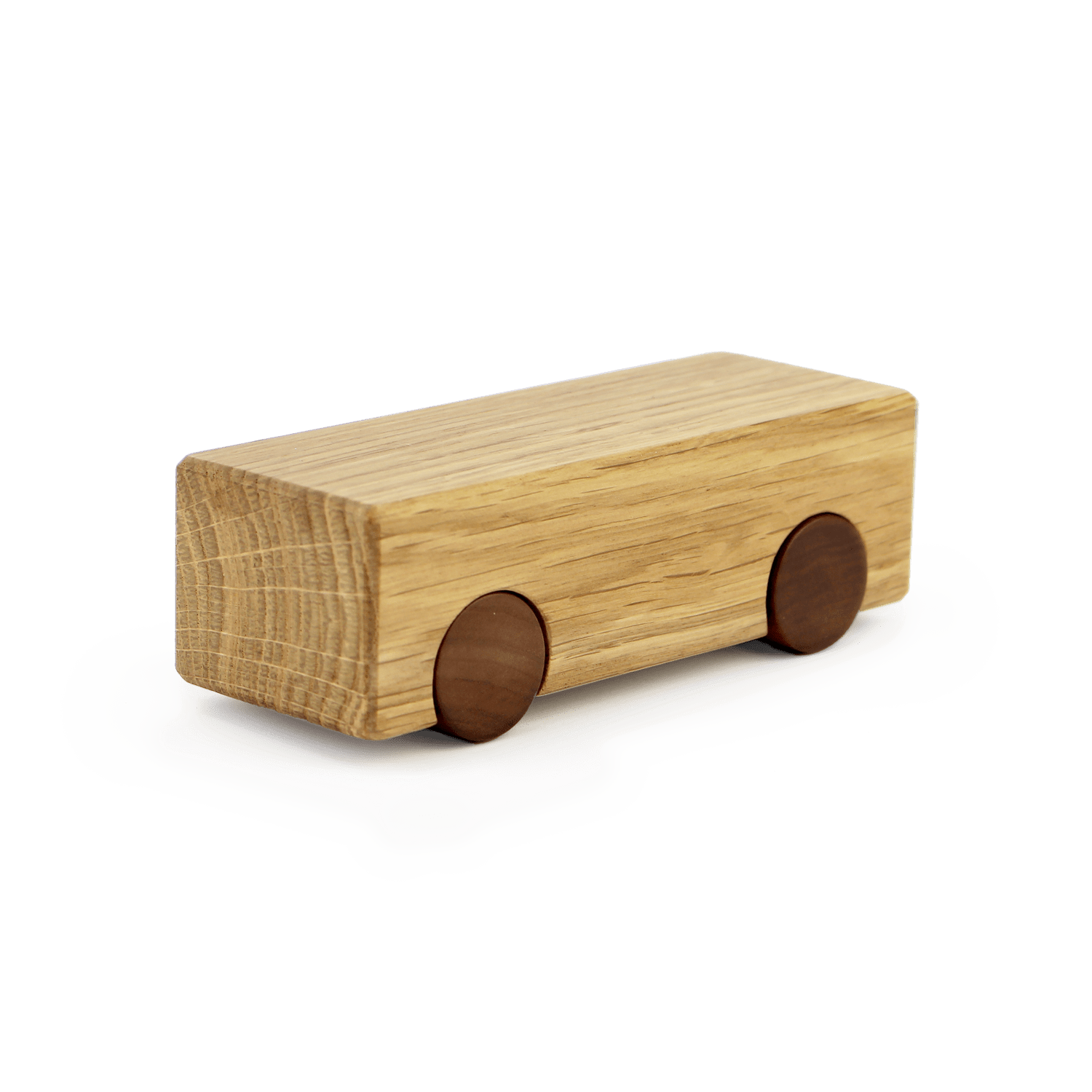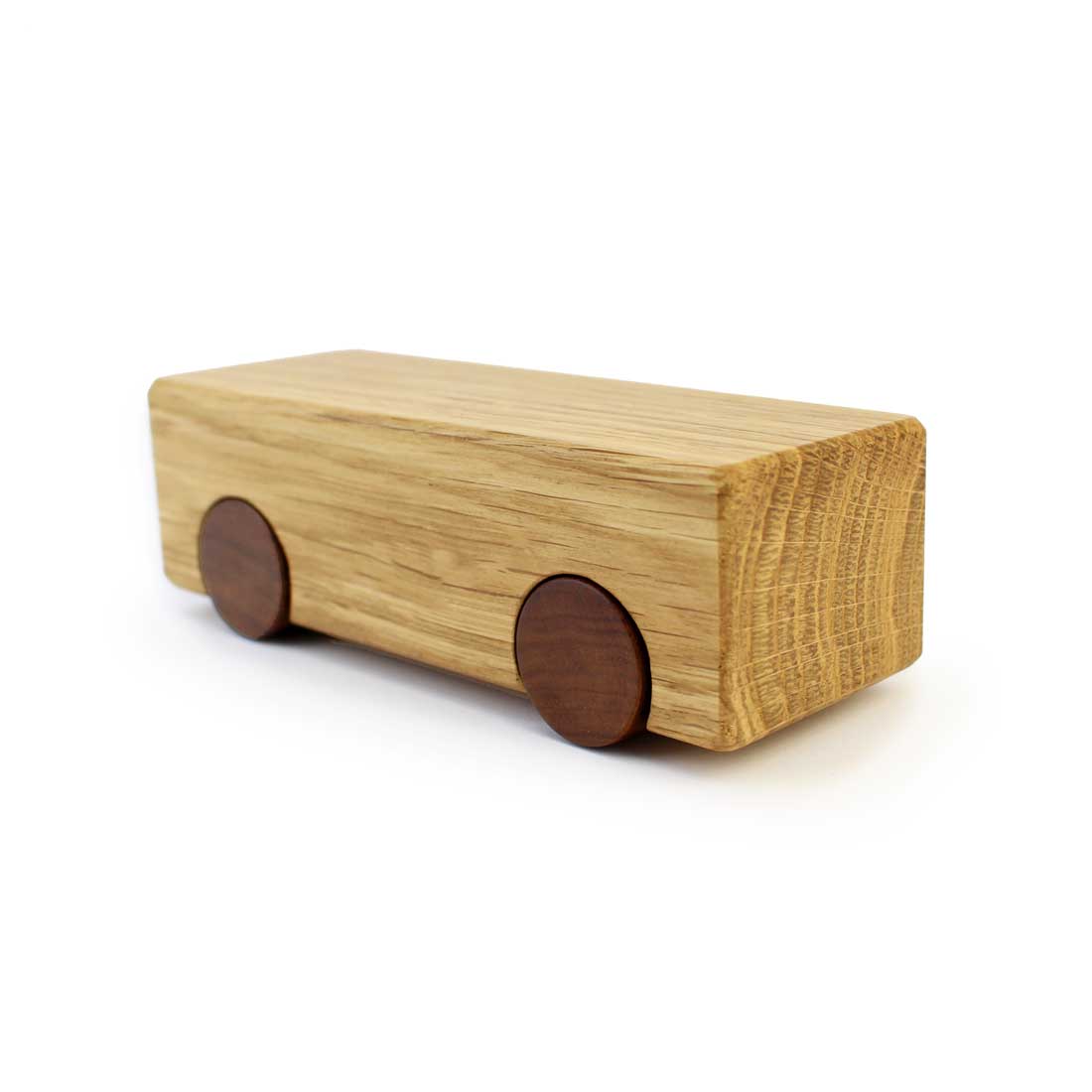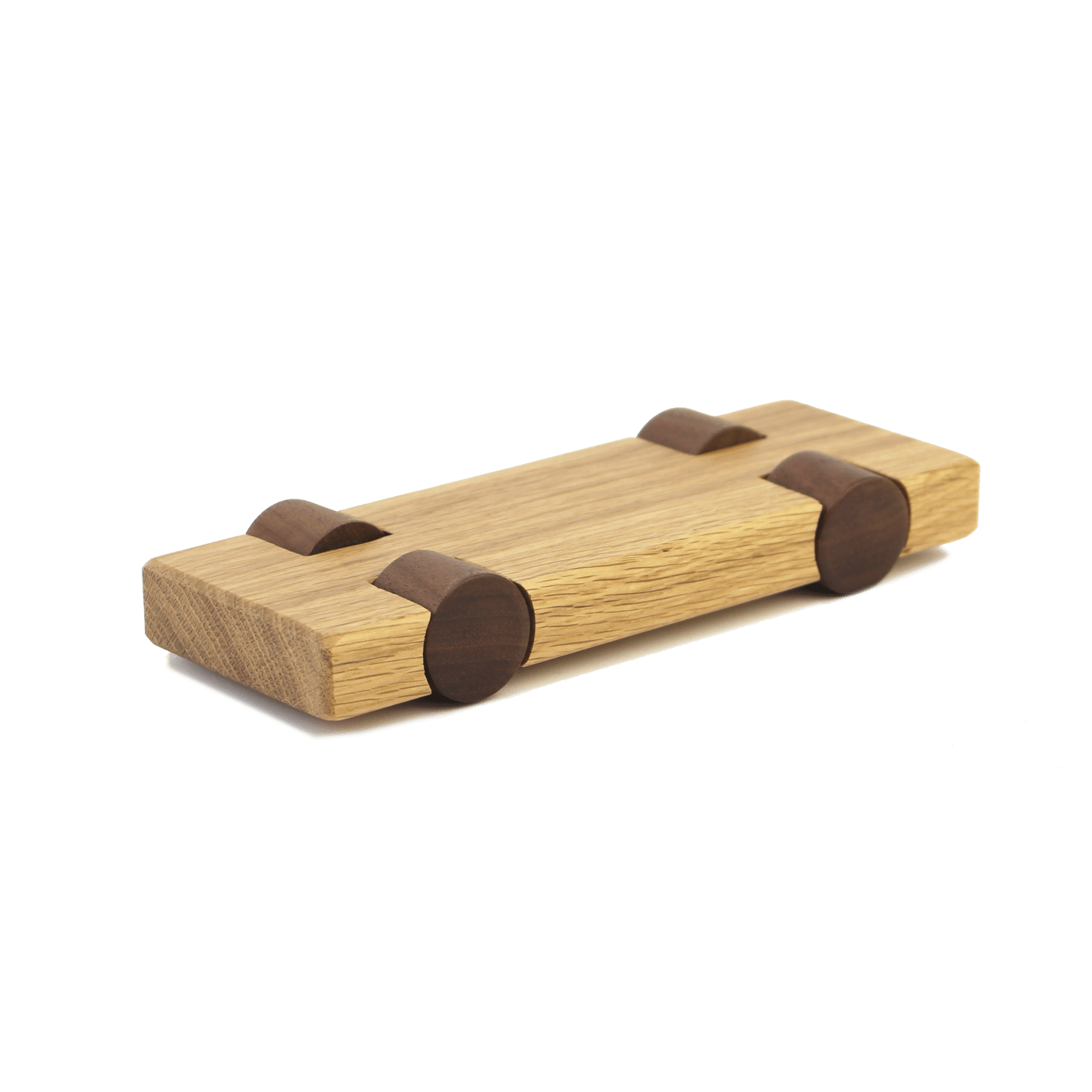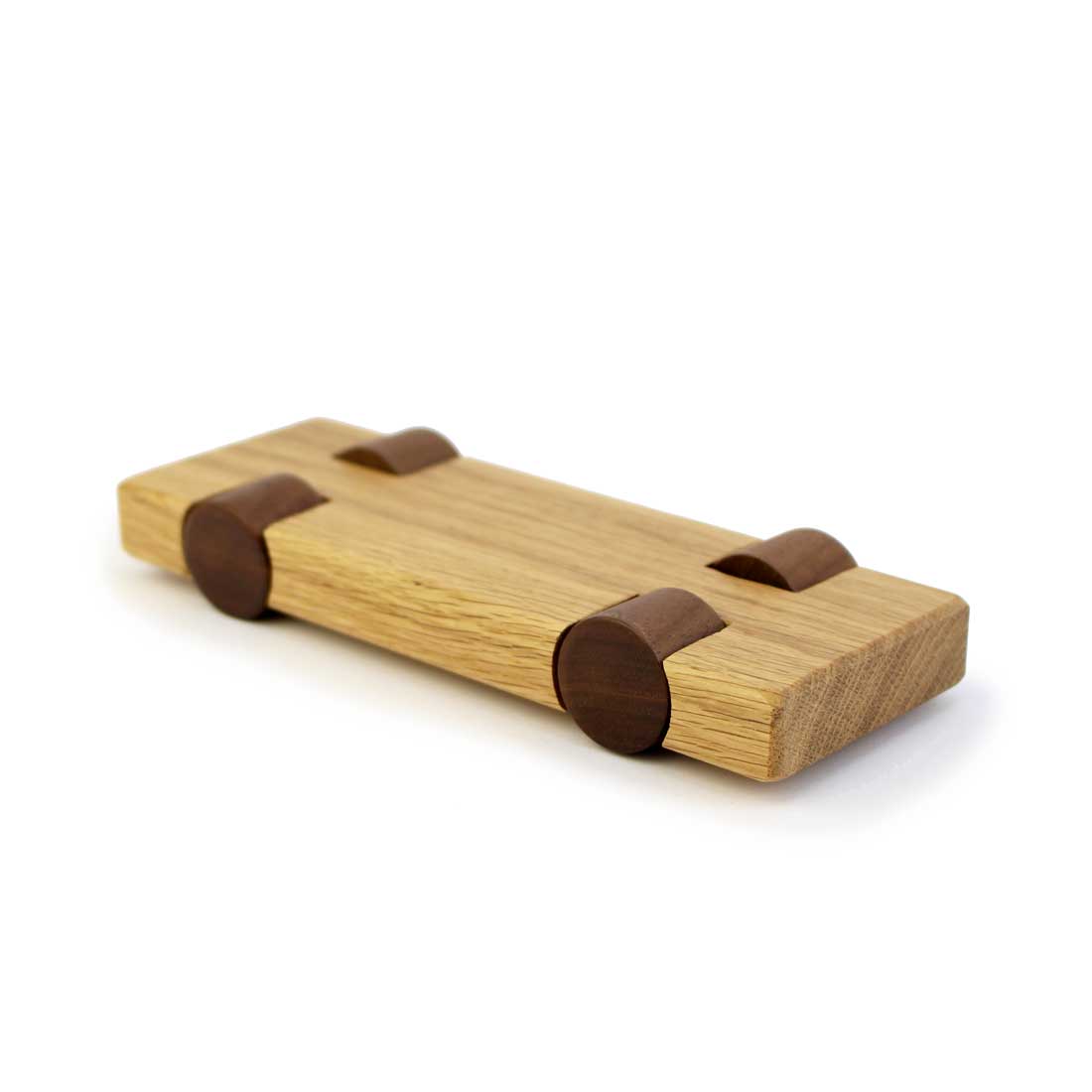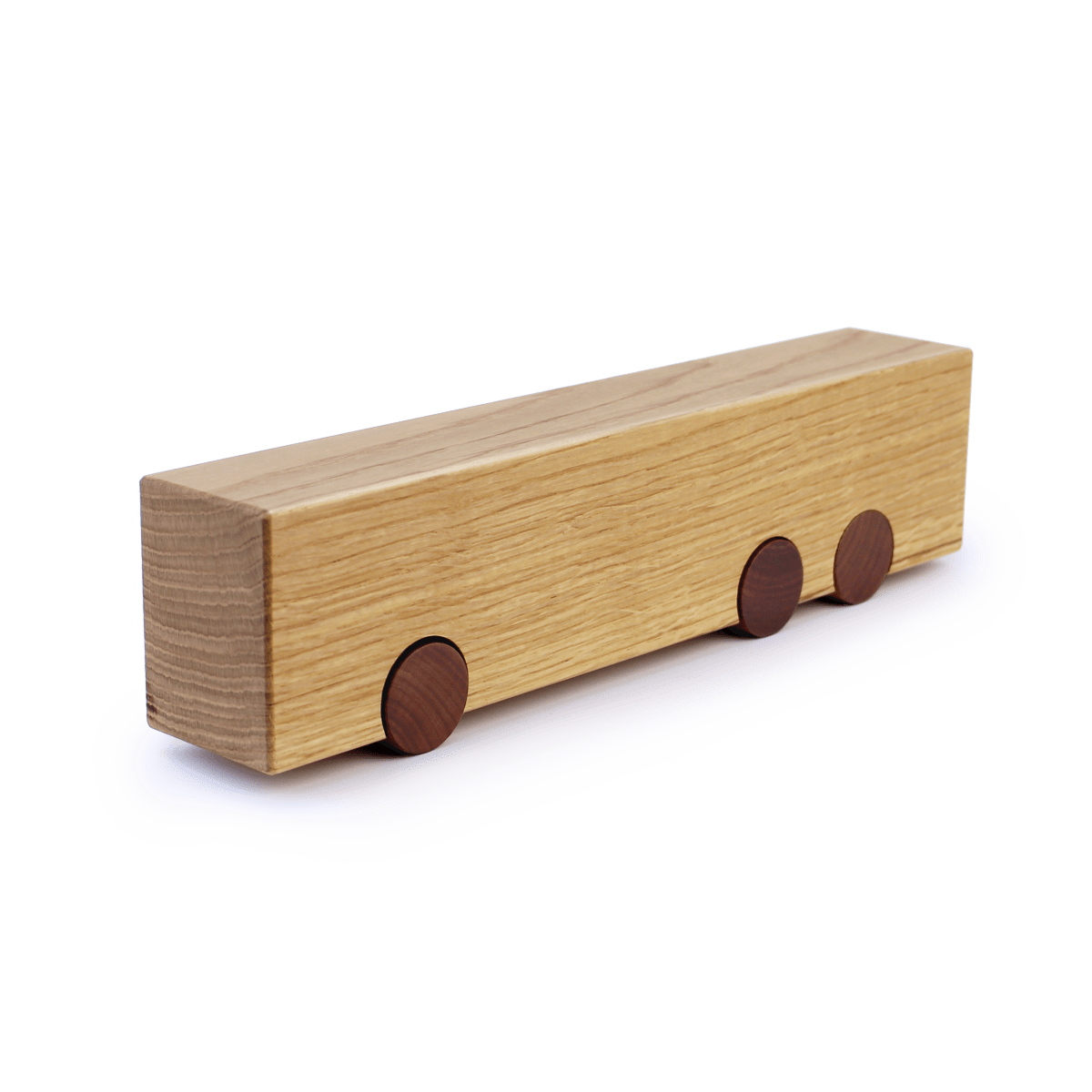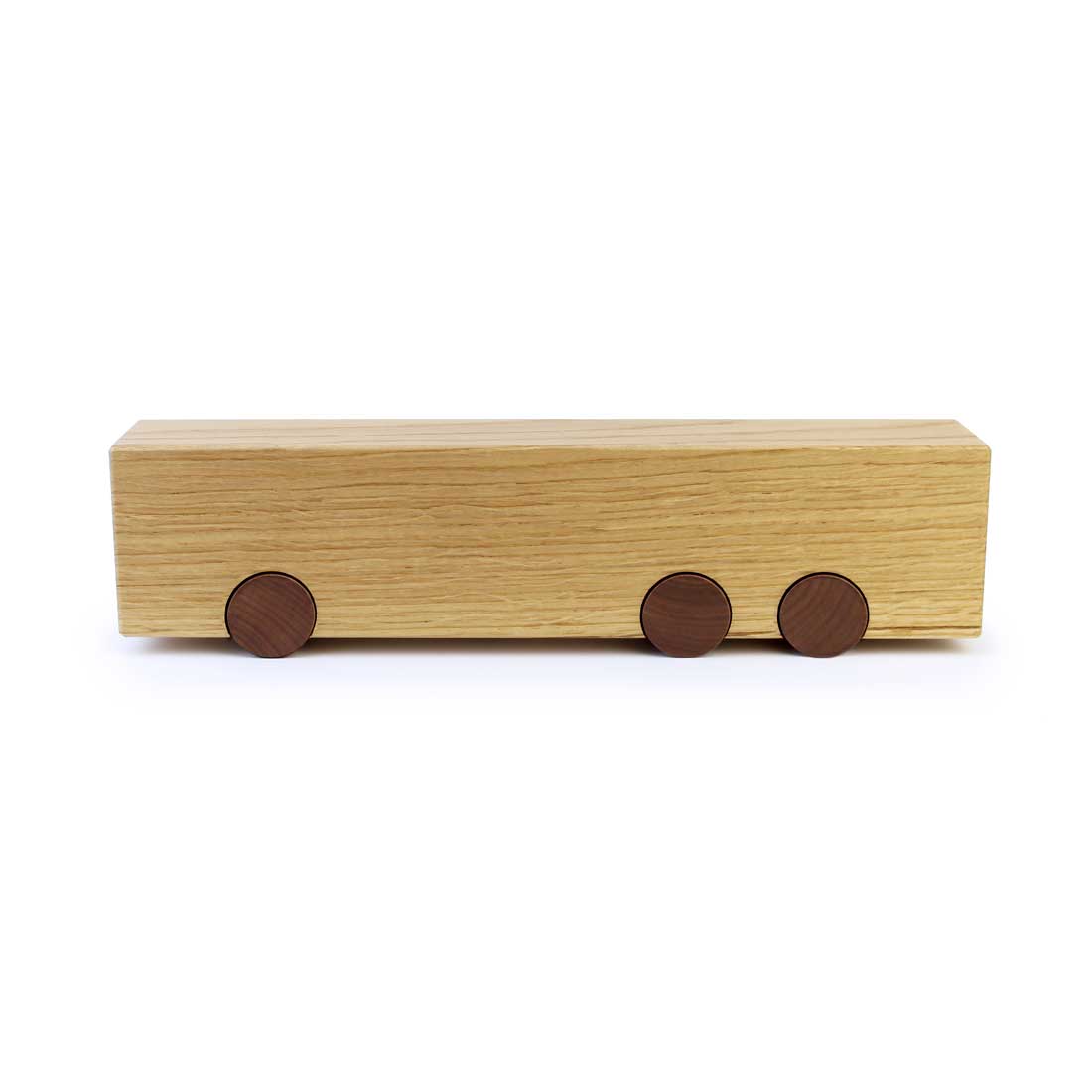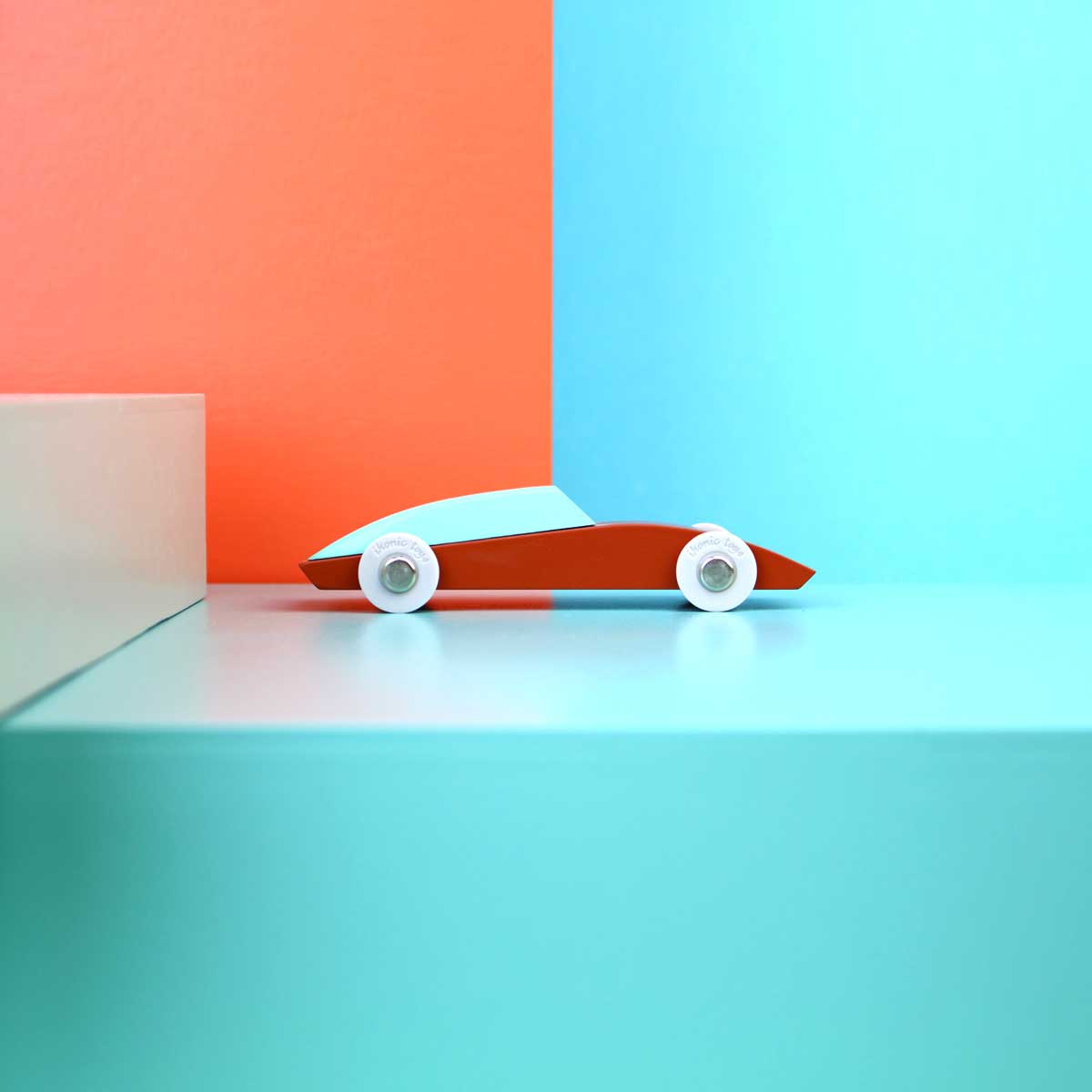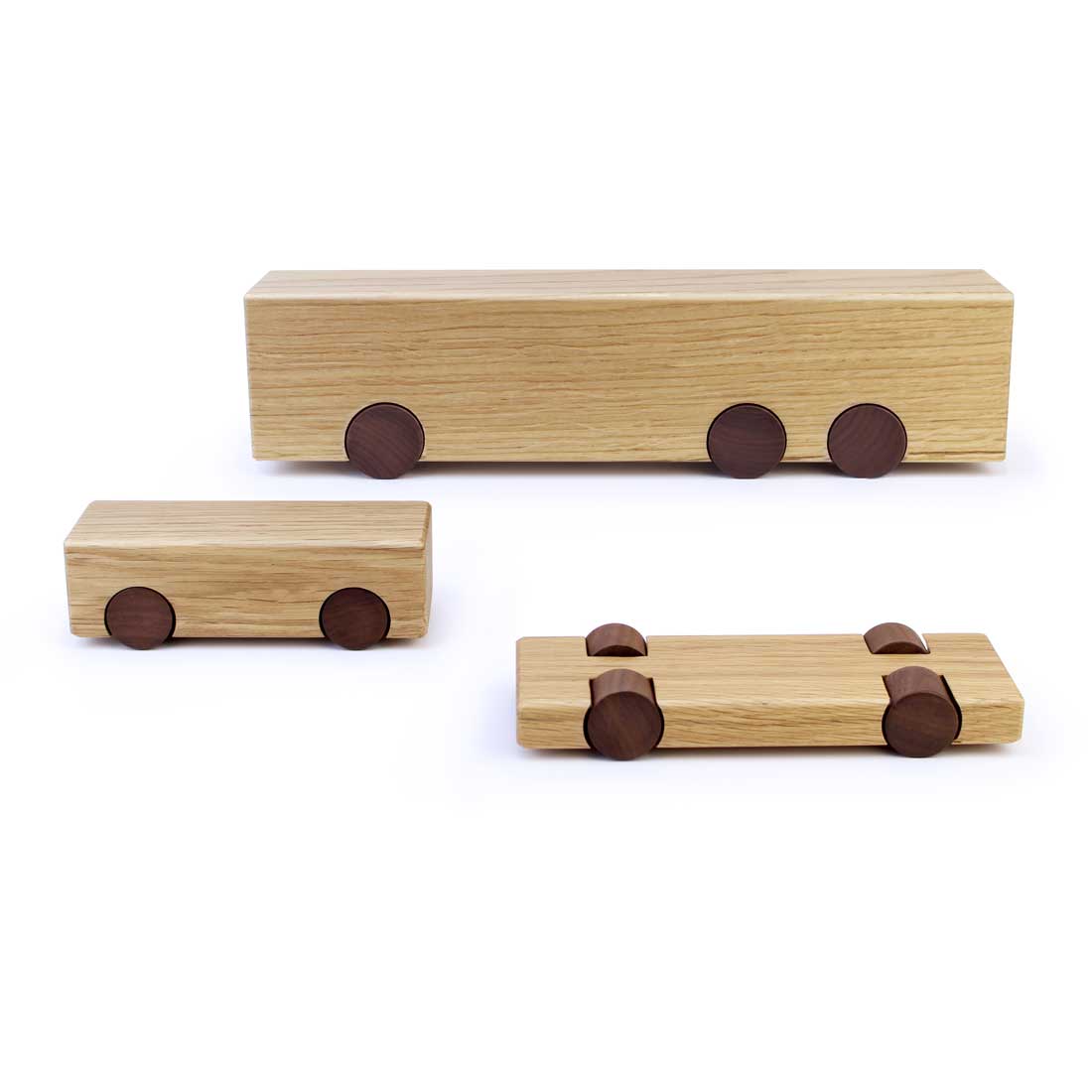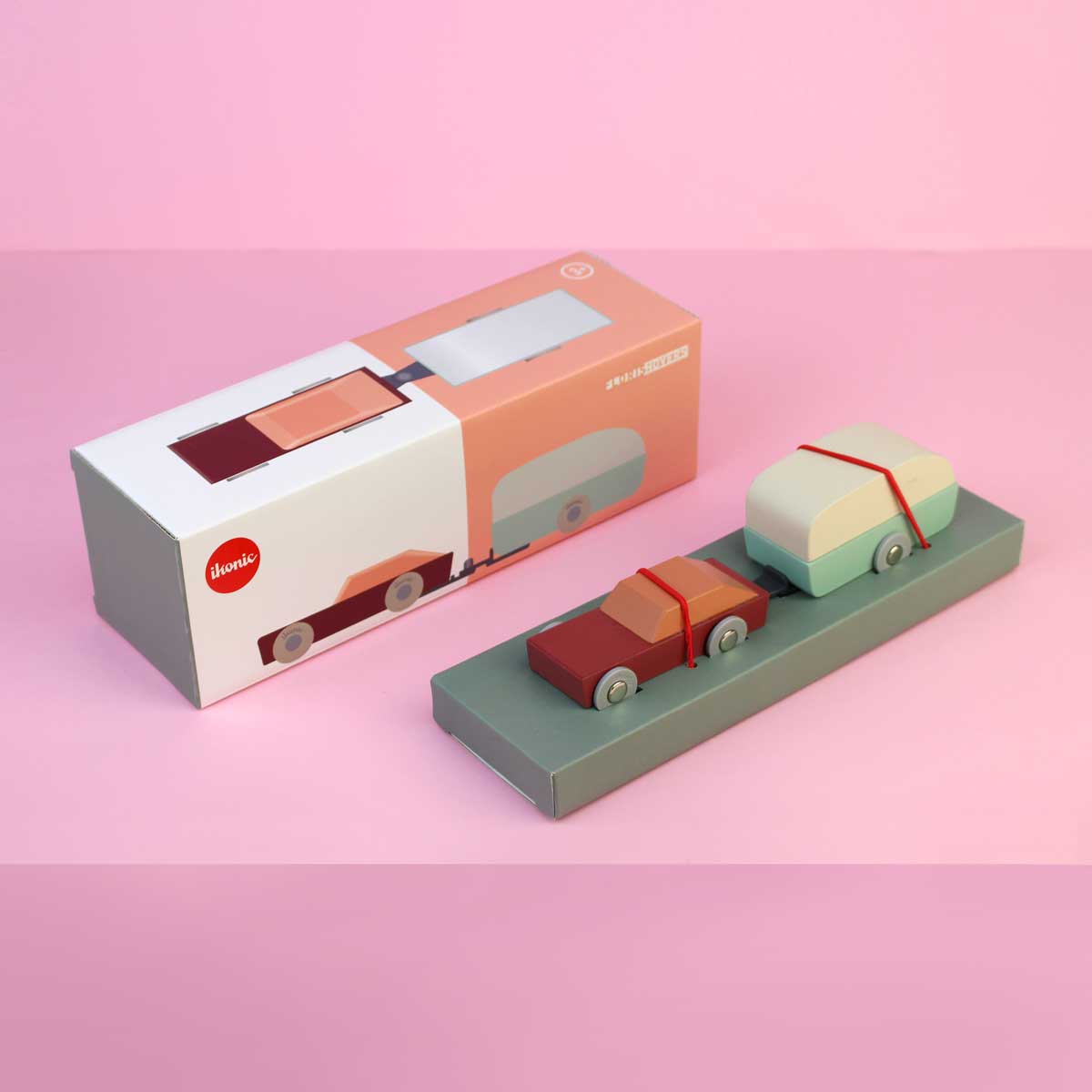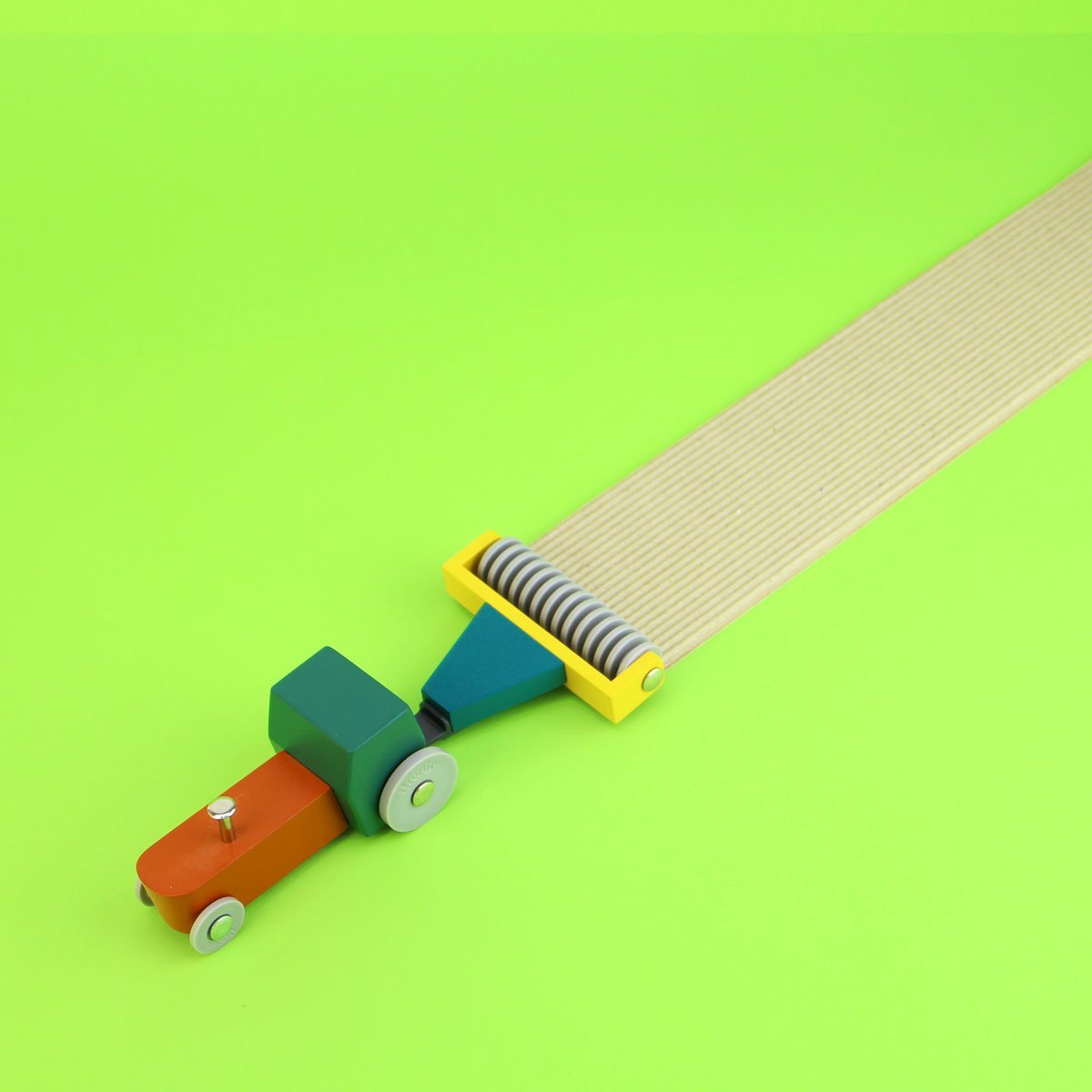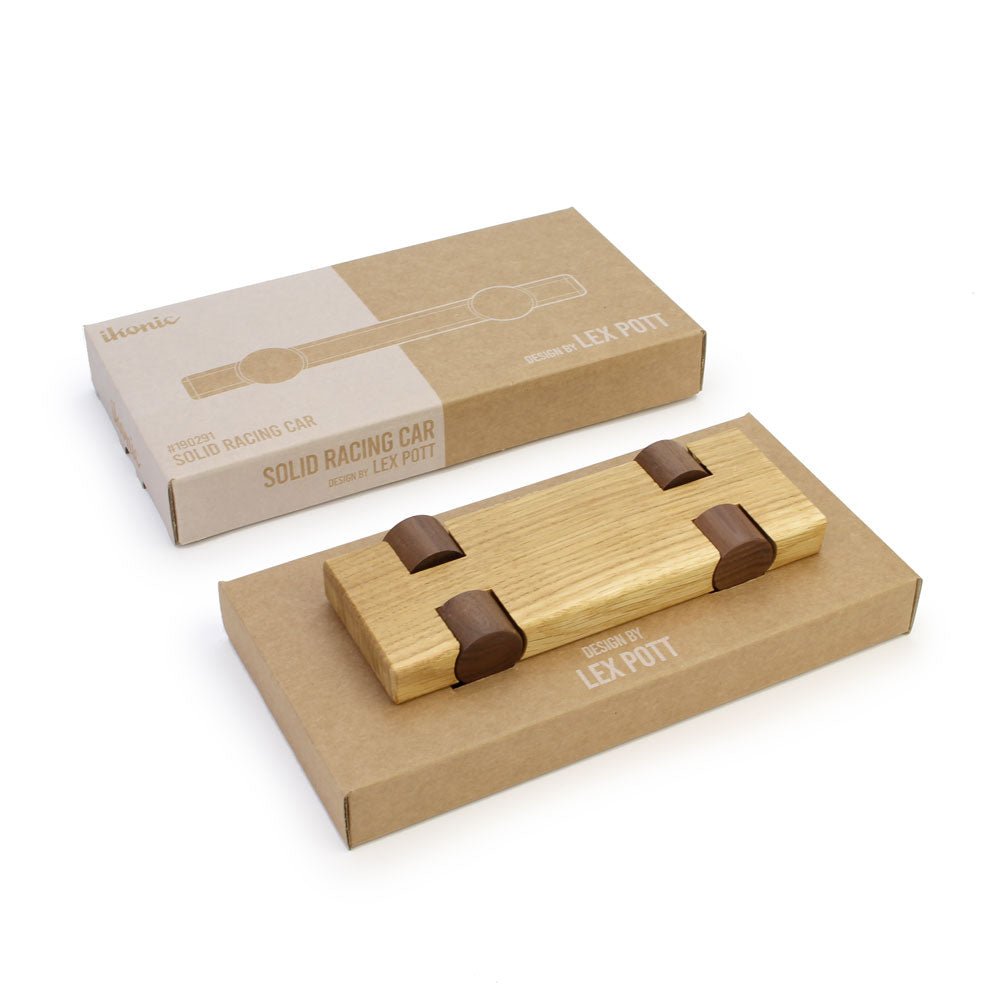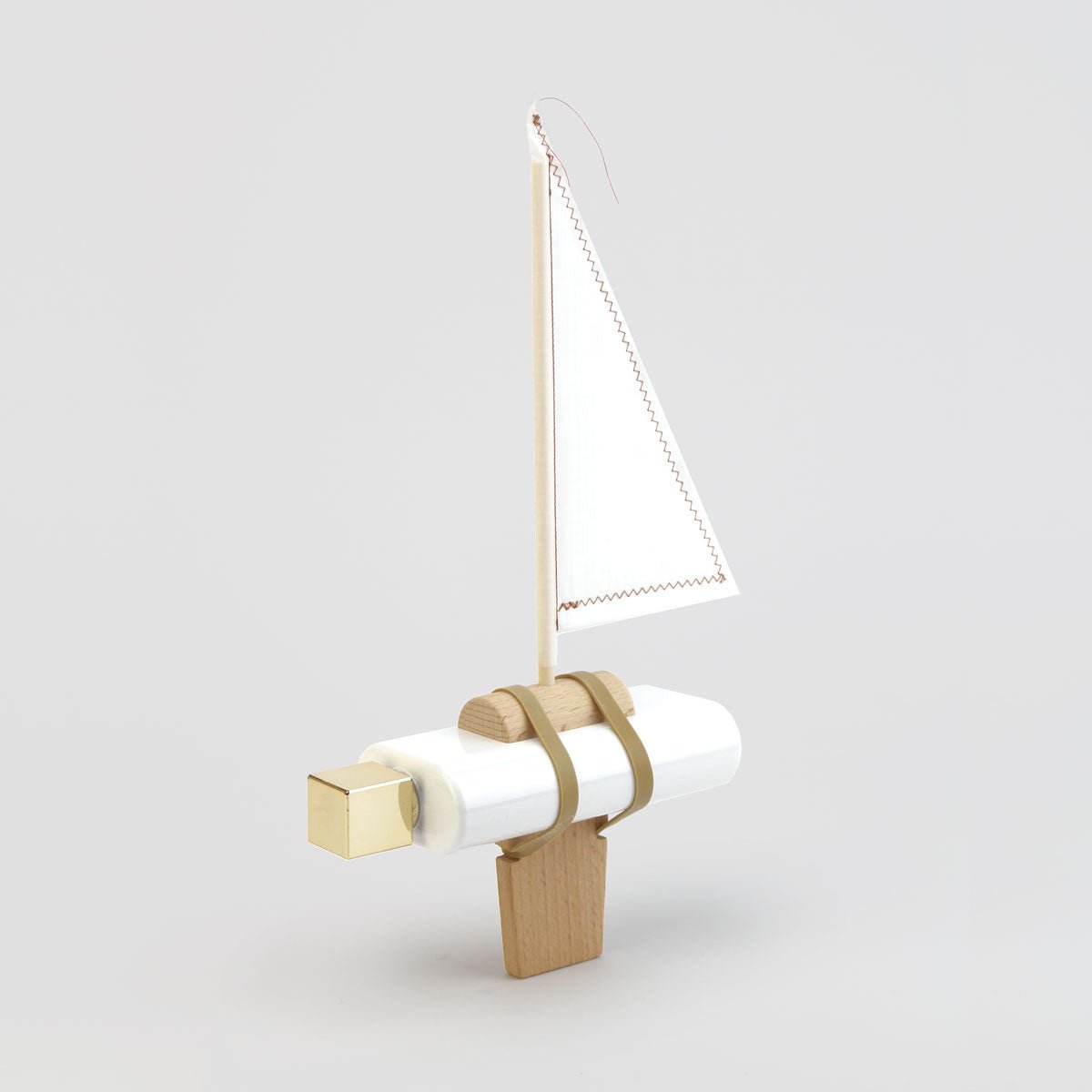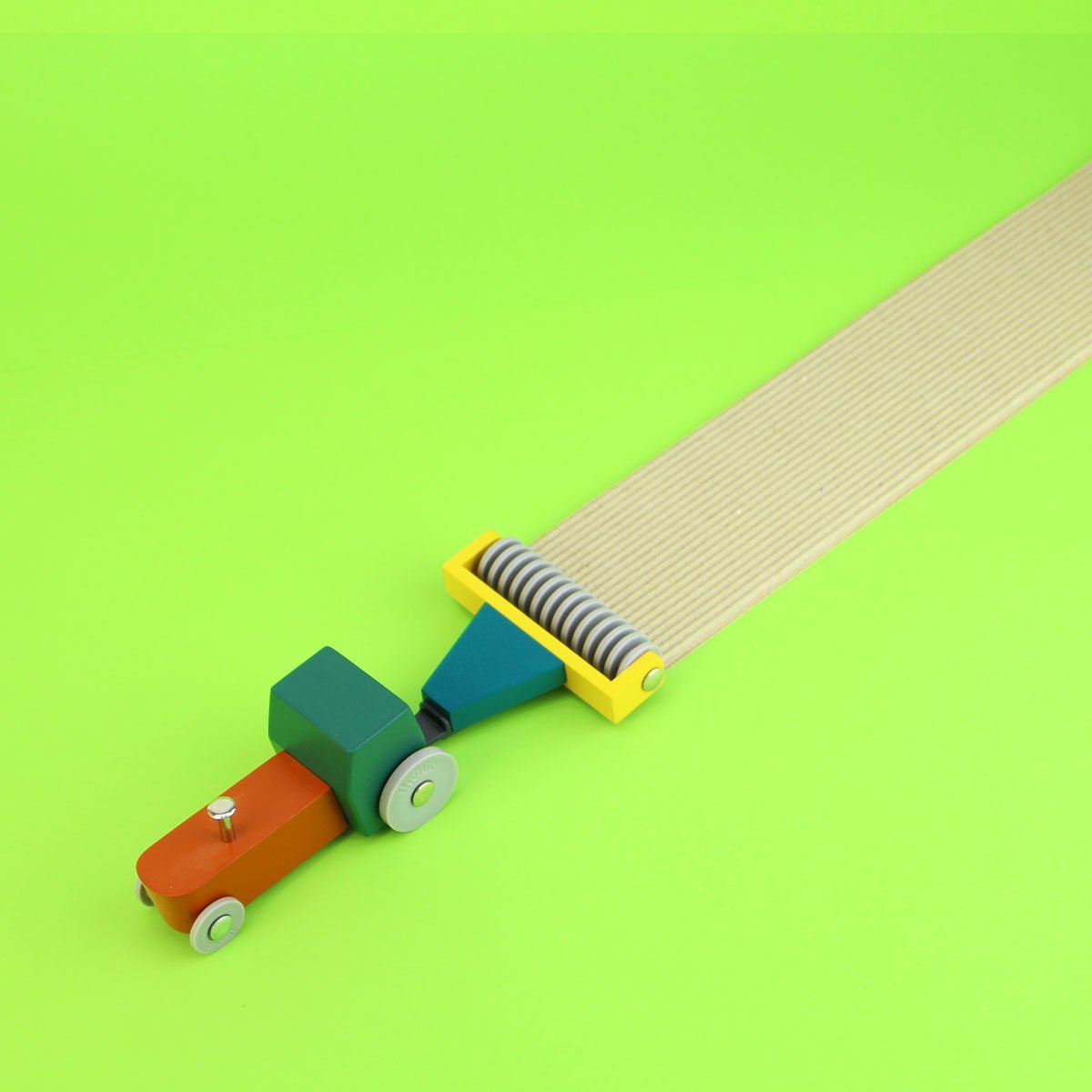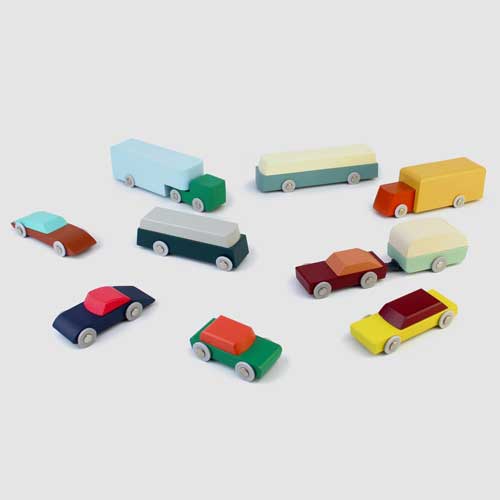
Sustainable Toys

Why sustainable toys are becoming increasingly popular
The choice for sustainable toys and ecologically responsible toys is growing steadily. More and more parents are aware of the impact toys have on both the environment and their children's development. After all, no one wants their toddler to have to get new, cheap plastic toys every few weeks that quickly break down and end up as waste. This realization is leading to a shift towards high-quality, responsible toys that can last for generations.
Our IKONIC products are produced, packaged and transported as sustainably and responsibly as possible. We strive for local production and materials. Although we look as close to home as possible for the production of our objects, it is very difficult to find high-quality European producers for children's toys. Lex Pott's wooden cars for IKONIC are made in Poland, but for Floris Hovers' toys we use a factory in Vietnam. This is mainly due to the paint quality and the price. European producers can often make the wooden parts, but the paint quality often leaves much to be desired. The price is also on the high side; for example, Lex Pott's toys are already relatively high, but still unpainted, so a painted variant would be even higher. We notice to our customers that there is indeed a maximum amount that people are willing to spend on these objects. In addition, we like to use manufacturers who are used to the most recent safety requirements for toys, and these are usually manufacturers who make toys in large quantities. And those factories have all disappeared from Europe over time.
For the products made in Europe, road transport is used, the products from Vietnam are transported by sea freight, where the emissions are compensated (via transport platform Shypple).
In our collection you will find sturdy, solid and safe toys, as well as special design and interior objects. Please read the information on the product pages carefully before purchasing; The handmade items are mainly for decoration and have not been tested for toy safety requirements, so they are suitable for children from 12 years old. Although not tested, these products are made of FSC beech wood and lacquered with water-based paint. The transparent vehicles are also intended for decoration. Each product page indicates the age for which the product is suitable and the standard the product meets.

On this page you will discover everything about sustainable toys, including facts and figures about the environmental impact of the toy industry, popular trends, tips on how to make a responsible choice yourself, and attention to iconic designs such as the wooden cars of Floris Hovers and Lex Pott.
What are sustainable and ecological toys?
Sustainable toys are made with attention to people and the environment. This means minimal environmental impact in the production and use of natural, renewable or recycled materials. Wood from certified responsible forest management (FSC), bamboo, cork and even recycled plastic are gaining ground. In addition to the use of materials, the production conditions, packaging, transport and lifespan are also important for the sustainability label.
'Ecological toys' focus on environmentally friendly materials that are safe for children and often biodegradable. Brands are focusing on local, European production and minimising packaging waste. Many ecologically responsible toys carry quality marks such as FSC, PEFC, OEKO-TEX, or the CE mark for safety. Toys that are designed for a circular lifespan where they are easy to repair, reuse or recycle also fall within this category.
Examples of sustainable design are the wooden cars of Floris Hovers and Lex Pott's Solid Cars. These cars are made of FSC-certified wood, have a timeless and minimalist design and will therefore last for generations. For Floris Hovers' bottle boat, the user has to add an empty used shampoo bottle to make a toy boat. The sails of the bottle boats are stitched by hand in the Netherlands, at the studio and sheltered workshop Draad en Daad in Schijndel.

What is sustainable toy and why is it better for the environment?
Sustainable toys differ from regular toys because they have a lower ecological footprint. While the traditional toy industry produces billions of kilos of plastic worldwide every year, much of which breaks down quickly and ends up in landfills or in the ocean, sustainable toys are designed to last a long life and are often easy to recycle or break down. Reports from the Ellen MacArthur Foundation and the United Nations show that as much as 90% of toys worldwide are made of plastic, most of which is not recycled.
Ecological toys made from materials such as wood, bamboo or recycled plastic contribute directly to a cleaner environment. Wood from responsibly managed forests, as certified with the FSC quality mark, promotes the preservation of forests and biodiversity. Brands such as PlanToys use residual wood from old rubber plantations, which prevents food waste. Furthermore, toy manufacturers in Europe are focusing on the use of green energy and stricter environmental requirements, which is in stark contrast to the often opaque production processes in low-wage countries. In addition, the longer lifespan of ecological toys means less waste: wooden blocks or cars are passed on to brothers, sisters or friends and sometimes even a second generation.
Advantages of ecological toys over regular toys
- Healthier and safer: Sustainable toys do not contain any toxic substances. It is regularly reported in the news that plastic toys contain lead-determining substances, plasticizers (phthalates) or BPA. Wooden toys from reliable brands use water-based lacquer and do not contain heavy metals.
- More sustainable in use: Wooden, bamboo or recycled materials are stronger and last longer than cheap plastic. The chance that toys made of responsible material will break is much smaller, resulting in less waste. Wooden cars such as those of Floris Hovers or Lex Pott can last for generations.
- Encourages imagination and development: The simple design of ecological toys, without unnecessary details or electronic functions, challenges toddlers to invent their own stories, role-play and get creative with their environment. The abstract shapes of the wooden cars of Floris Hovers and Lex Pott are a perfect example of this, because they leave room for personal interpretation.
- Smaller carbon footprint: Less waste, less resource consumption, fewer emissions during production and transport contribute to a more sustainable world. Especially by choosing locally produced ecological toys, the environmental impact is greatly reduced.
- Timeless and stable in value: Many ecologically responsible toys are timelessly designed and have a high aesthetic value. Some items even become beloved collectibles with adults.
What should I look for when buying sustainable toys for my toddler?
- Labels: Check the FSC mark for wood (responsible forest management), the CE mark for European safety requirements and OEKO-TEX for textile safety. A B Corporation certification or a well-known sustainability label provide additional confidence.
- Material choice: Choose solid wood, bamboo, cork or recycled plastic. Avoid toys with unknown or environmentally harmful plastics without a quality mark.
- Finishing: Safety is especially important with toys for toddlers. Choose toys without sharp edges, splinters or loose parts. Please note that used lacquer and paint are water-based and free of toxic substances.
- Age and development: Choose responsible toys that suit your child's stage of development. Wooden stacking blocks, vehicles, puzzles, shape stoves and balance boards are ideally suited for toddlers.
- Origin and production: Locally (European) produced toys often have a lower carbon footprint and are subject to stricter quality control. Look for transparency about the production location.
- Packaging: Sustainable toys are often packaged in recycled cardboard or completely unpackaged. Minimize waste by paying attention to this when purchasing.
Popular Types of Sustainable Toys for Toddlers
- Wooden blocks: Indispensable for motor development and imaginative building, such as the wooden blocks by Floris Hovers where you can make a colorful city. Brands such as Grimm's, PlanToys, Kapla and Eichorn also produce these sustainable toys in beautiful colors and shapes.
- Wooden vehicles: Like the famous wooden cars by Floris Hovers (Ikonic) and Lex Pott (Solid Car) – minimalist, timeless and almost indestructible.
- Climbing frames and balance boards: Physical play and discovery go hand in hand with sustainable use of materials at brands such as Stapelstein and Wobbel.
- Puzzles and shape stoves: Development-oriented, safe and made of FSC wood by ecologically conscious manufacturers such as PlanToys and Bajo, or the special puzzle by Joost Swarte for IKONIC.
- Creative & DIY: Stimulate creative play behavior by reusing (residual) materials, crafting with cardboard, pieces of fabric or residual wood.
- Role play and educational toys: Kitchens, doctor's kits and dolls made of sustainable textile or wood are gaining ground. They help with emotional and cognitive development.
The wooden cars of Floris Hovers and Lex Pott: inspiration for responsible toys
Floris Hovers, a Dutch designer, created a unique series of wooden cars for Ikonic that are instantly recognizable with their simple shapes and soft colors. They are made of FSC-certified beech wood and are produced in Europe. Each design is timeless and deliberately abstract, allowing children to use their imagination to assign the toy a different role each time. Parents appreciate not only the quality and safety, but also the possibility to collect or pass on toys: an investment in fun and sustainability.
Lex Pott's "Solid Cars" are the result of a collaboration between the designer of the same name and IKONIC. Each car is made of solid European oak and equipped with walnut wheels, hand-finished and lacquered with natural oils. The minimalist character of these wooden cars makes them popular with design enthusiasts, children and parents. Both designers prove that responsible toys can be just as attractive and inspiring as design objects and at the same time safe, environmentally conscious and robust.
Why are more and more parents opting for ecologically responsible toys?
Parents are increasingly making the choice for ecological and responsible toys for various reasons. Firstly, it brings health benefits: less exposure to harmful substances or microplastics. In addition, this choice is in line with a sustainable lifestyle: less waste, less CO₂ emissions and responsible forest management are seen as important by the new generation of parents. Various consumer surveys show that more than 60% of parents with young children explicitly consider the environment in their purchasing decision and that locally produced, ecological toys are increasingly being sought.
The aesthetic value and longer playing pleasure are also decisive. Wooden toys are less sensitive to trends, timeless and often more beautifully designed. Moreover, designs such as those by Floris Hovers and Lex Pott show that style, sustainability and fun can go hand in hand.
Frequently asked questions about sustainable toys (FAQ)
- What exactly are sustainable toys? Sustainable toys are made from environmentally friendly materials and produced with people and planet in mind, with a long lifespan and without harmful substances.
- Why are sustainable toys better for the environment? The use of natural and recycled materials and longer use greatly reduces the environmental impact compared to conventional plastic toys.
- Are sustainable toys better for my toddler? Yes. It contains no harmful substances, is often stronger and safer and stimulates healthier development and creativity.
- Do sustainable toys always have to be made of wood? Not necessarily. Bamboo, cork, recycled plastic or sustainably manufactured textiles can also be responsible. The most important thing is the combination of material, production and service life.
- Are sustainable toys much more expensive? Yes, the purchase is often a bit higher, but because it lasts longer, it is cheaper in the long run. Buying second-hand is even more sustainable and helps to save costs.
- Are second-hand toys also sustainable? Absolutely. Reuse extends the lifespan of products and saves resources.
- What do I look for when buying? Look for quality marks, choose local production, check material and finish and minimize unnecessary packaging.
- Are the wooden cars of Floris Hovers and Lex Pott sustainable? Yes. Both are made from FSC-certified wood, free of harmful substances and designed to last.
- Can sustainable toys get wet? Usually not for a long time. Wooden toys can be cleaned briefly with a damp cloth, but prolonged moisture can affect the material.
Trends and developments in sustainable toys
- The sharing economy in toys: Sharing or renting sustainable toys is becoming easier and more popular through rental platforms such as TinyLibrary. This contributes to less waste and lower costs for parents.
- Local production: By bringing production closer to home (for example within Europe), the ecological footprint is significantly reduced and working conditions are improved.
- Back to basics: Classic wooden toys, without electronics or plastic, stimulate imagination and are more appreciated. Designs such as those by Lex Pott and Floris Hovers fit in perfectly with this.
- Ask for transparency and quality marks: Parents expect openness about origin, materials used and their impact. Manufacturers who invest in this gain confidence and popularity.
- Circularity: Toys are increasingly designed for the dismantling and reuse of raw materials, which contributes to a circular economy.
Consciously choosing sustainable toys
In summary: sustainable toys are an investment in the future of both your child and the planet. By choosing ecologically responsible toys, you minimize waste, encourage healthy development and introduce children to respect for the world around them. When purchasing sustainable toys, pay close attention to quality marks, choice of materials, origin and packaging. Take the iconic wooden cars of Floris Hovers or Lex Pott as inspiration: timeless, beautiful, strong and responsible. Will your child play with these cars later? Then you can be sure that sustainable play is more fun and better, for now, later and the world around us.
Delve into more:
Sustainable toys 3 years
Sustainable toys 4 years
Sustainable toys 5 years
Sustainable toys 6 years
Sustainable toys 7 years
FSC-certified toys
Toys made in Europe
Dutch toys






